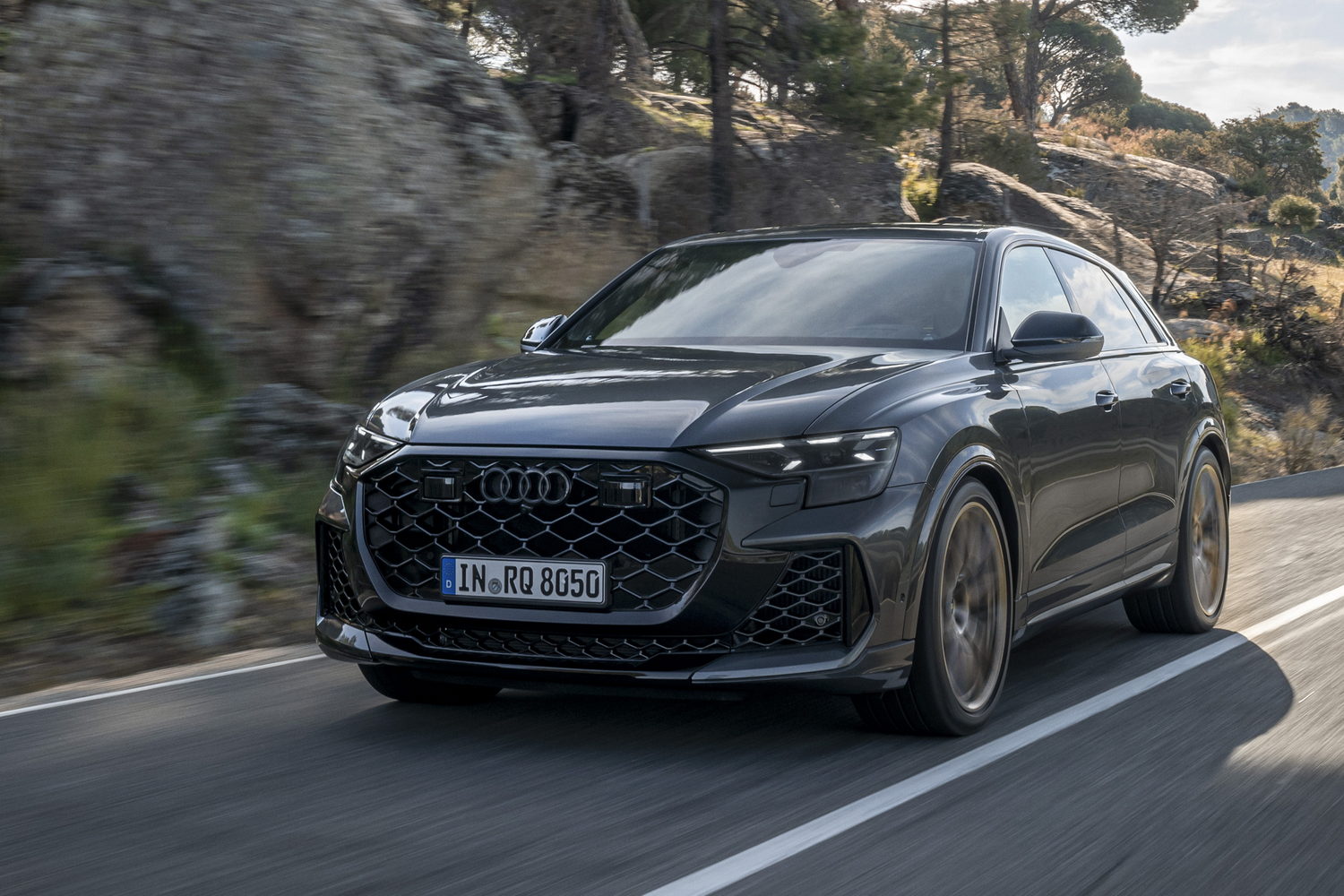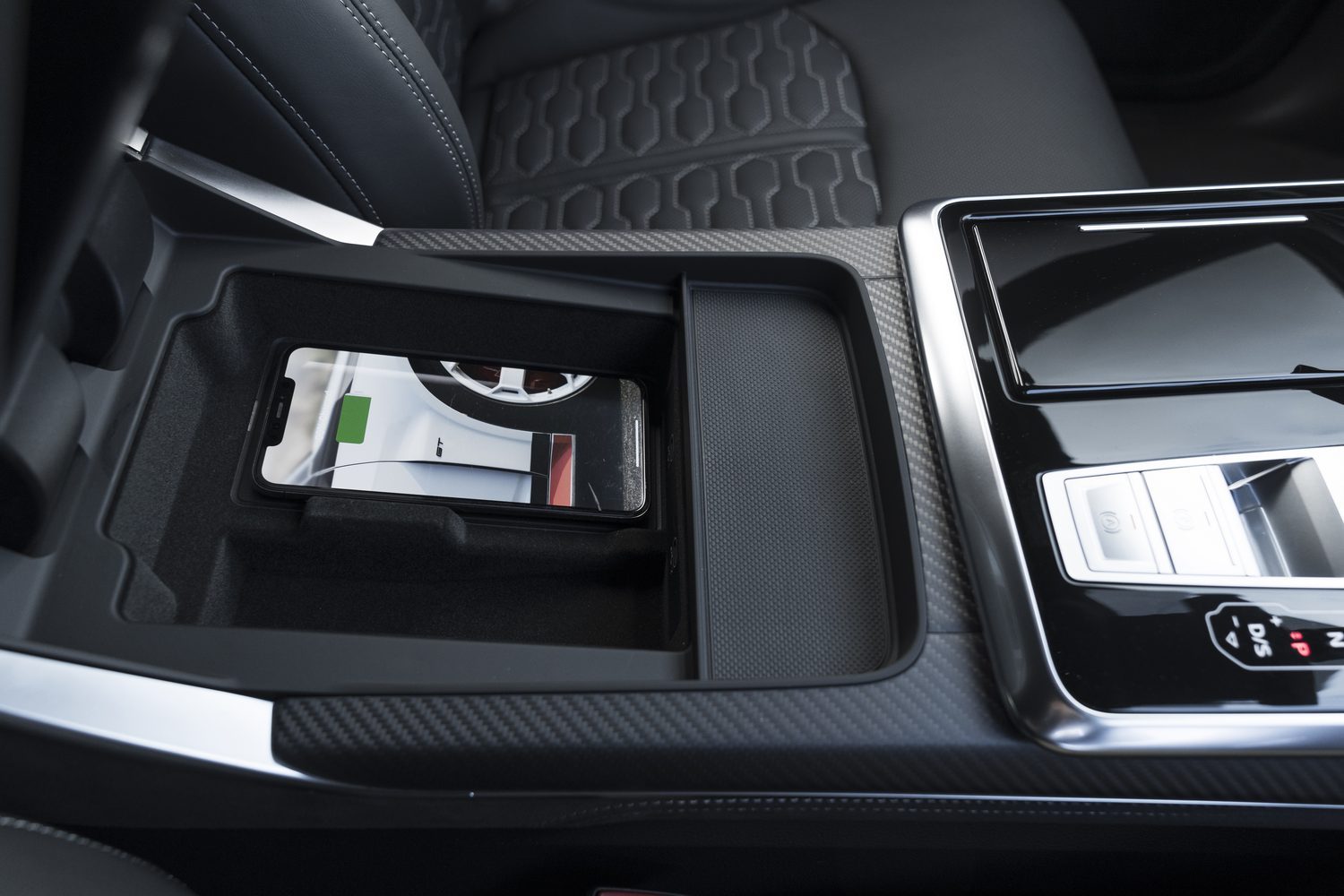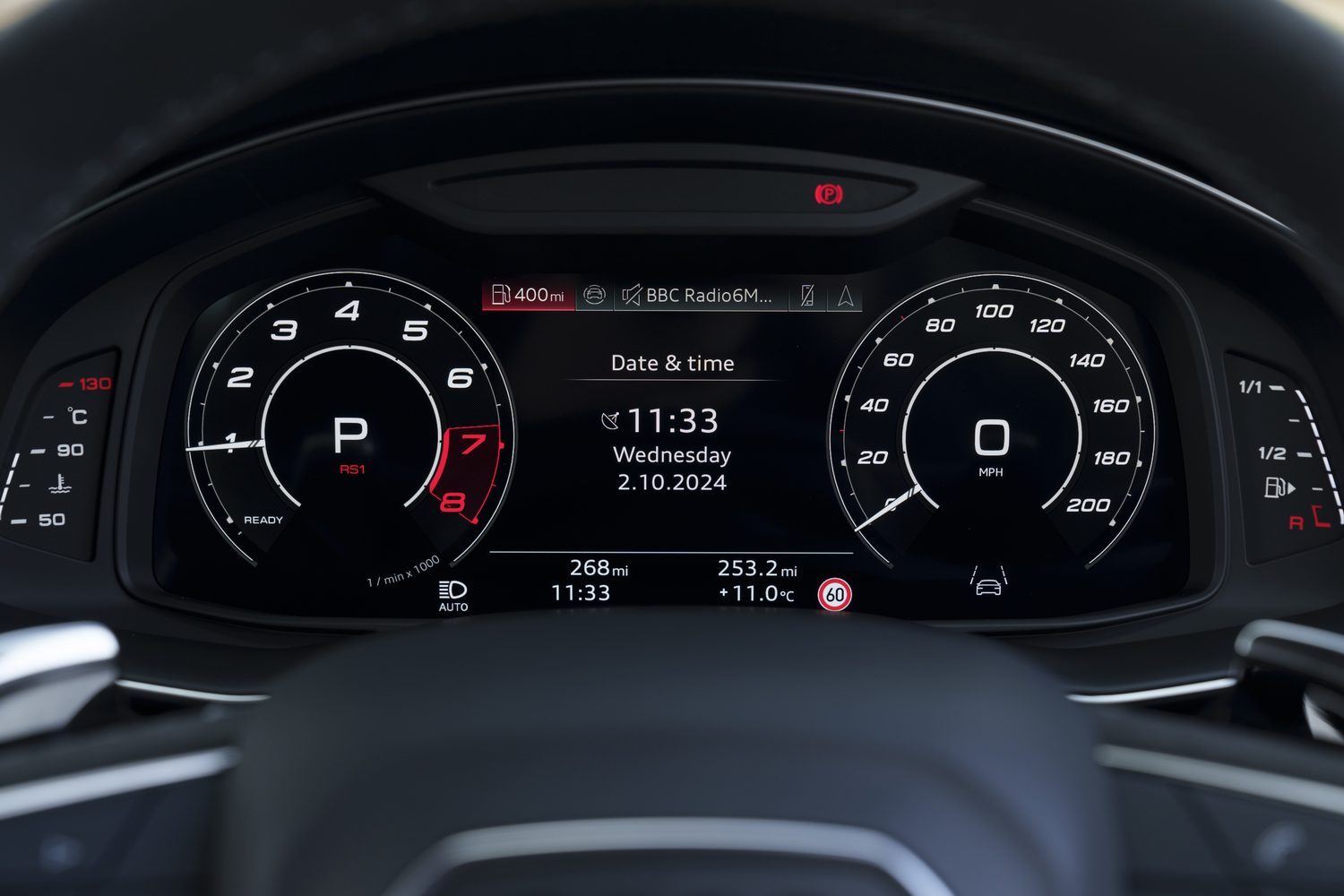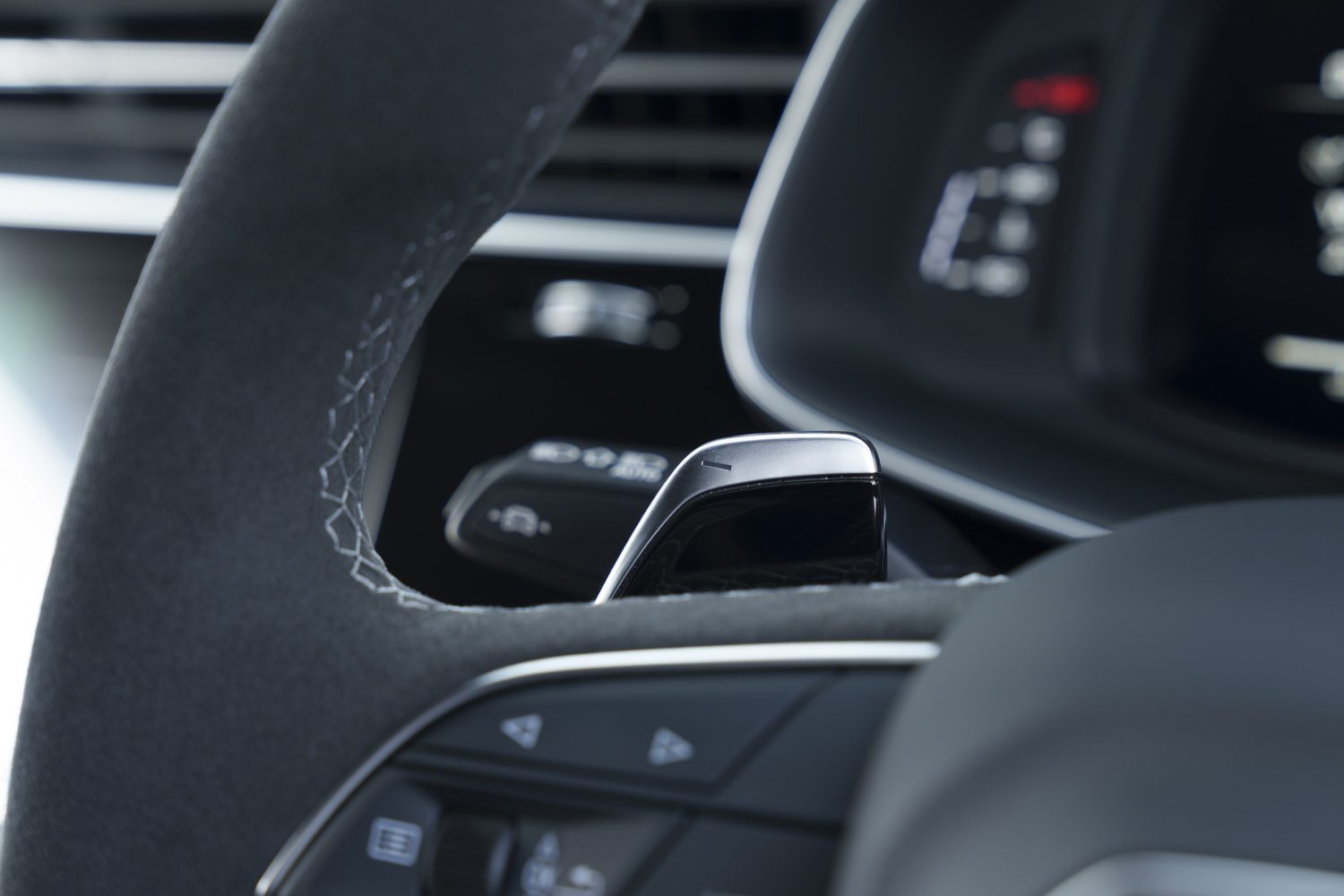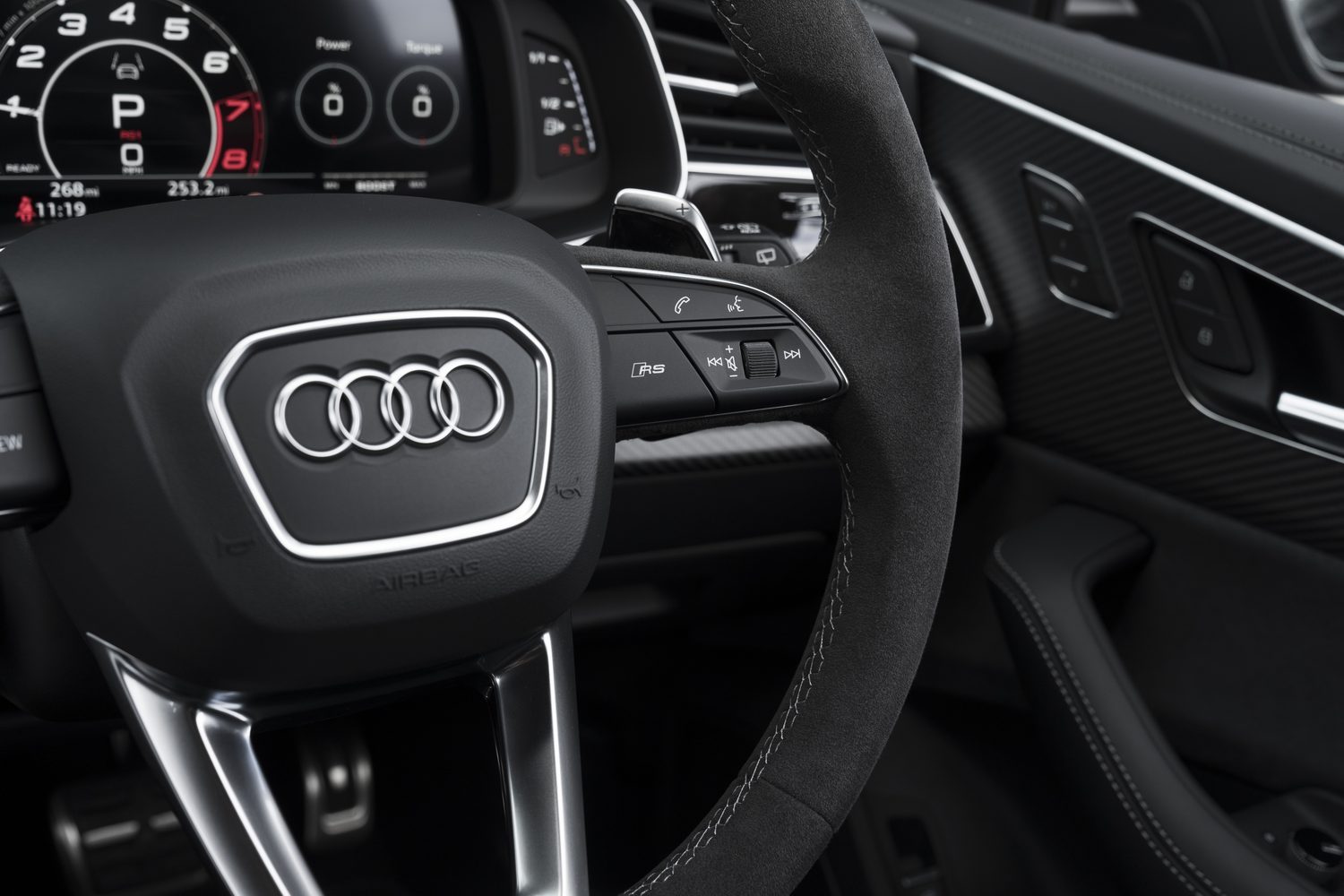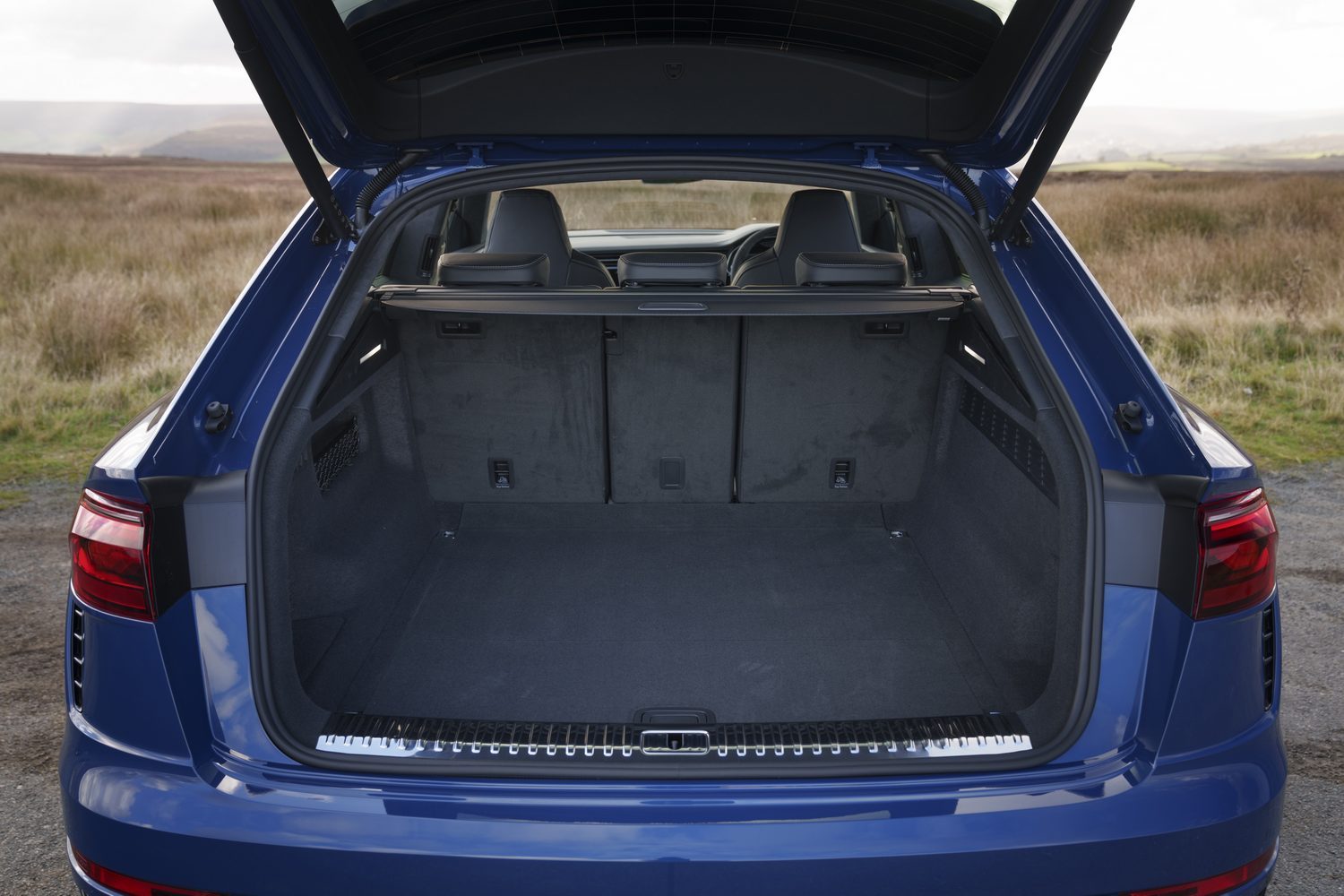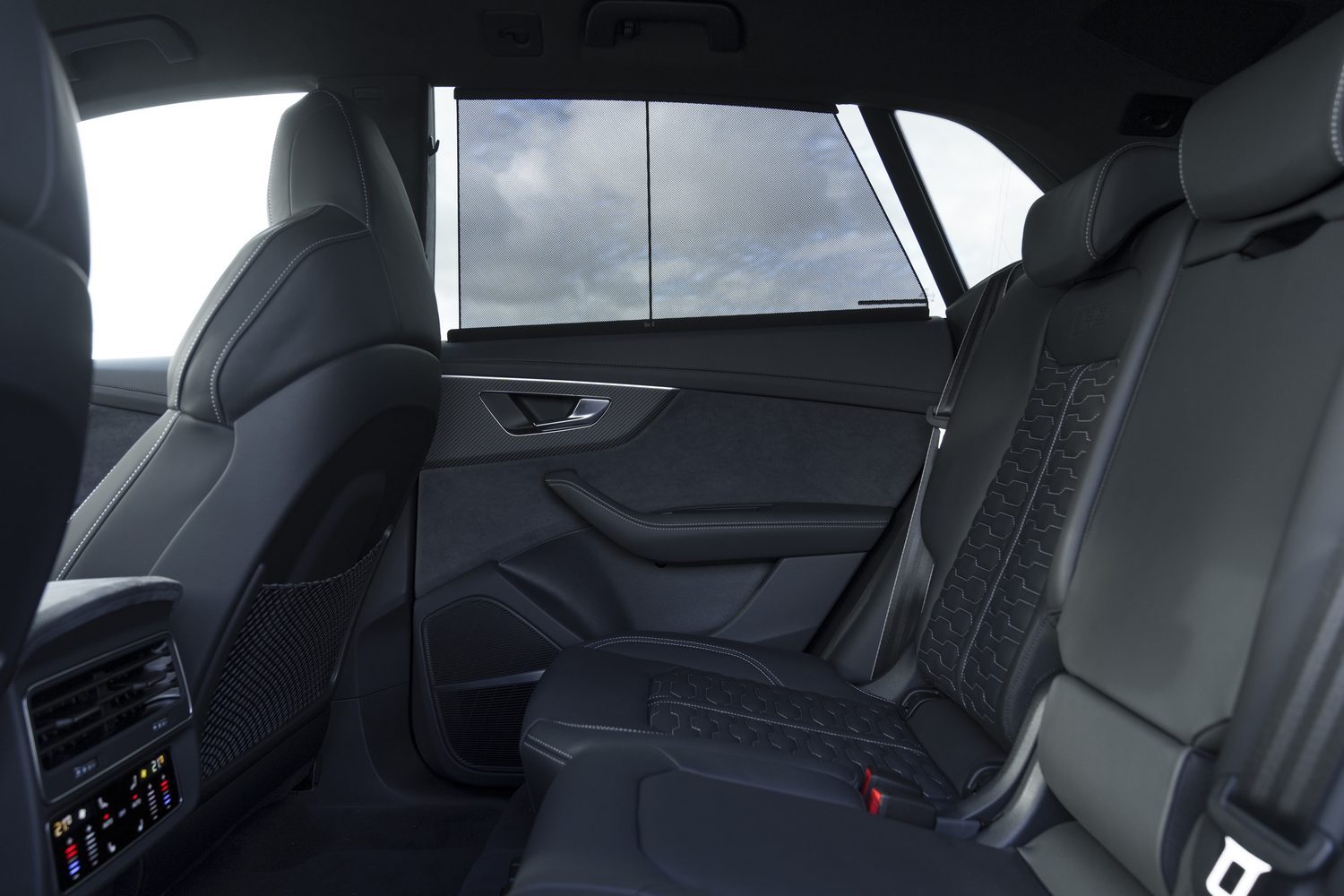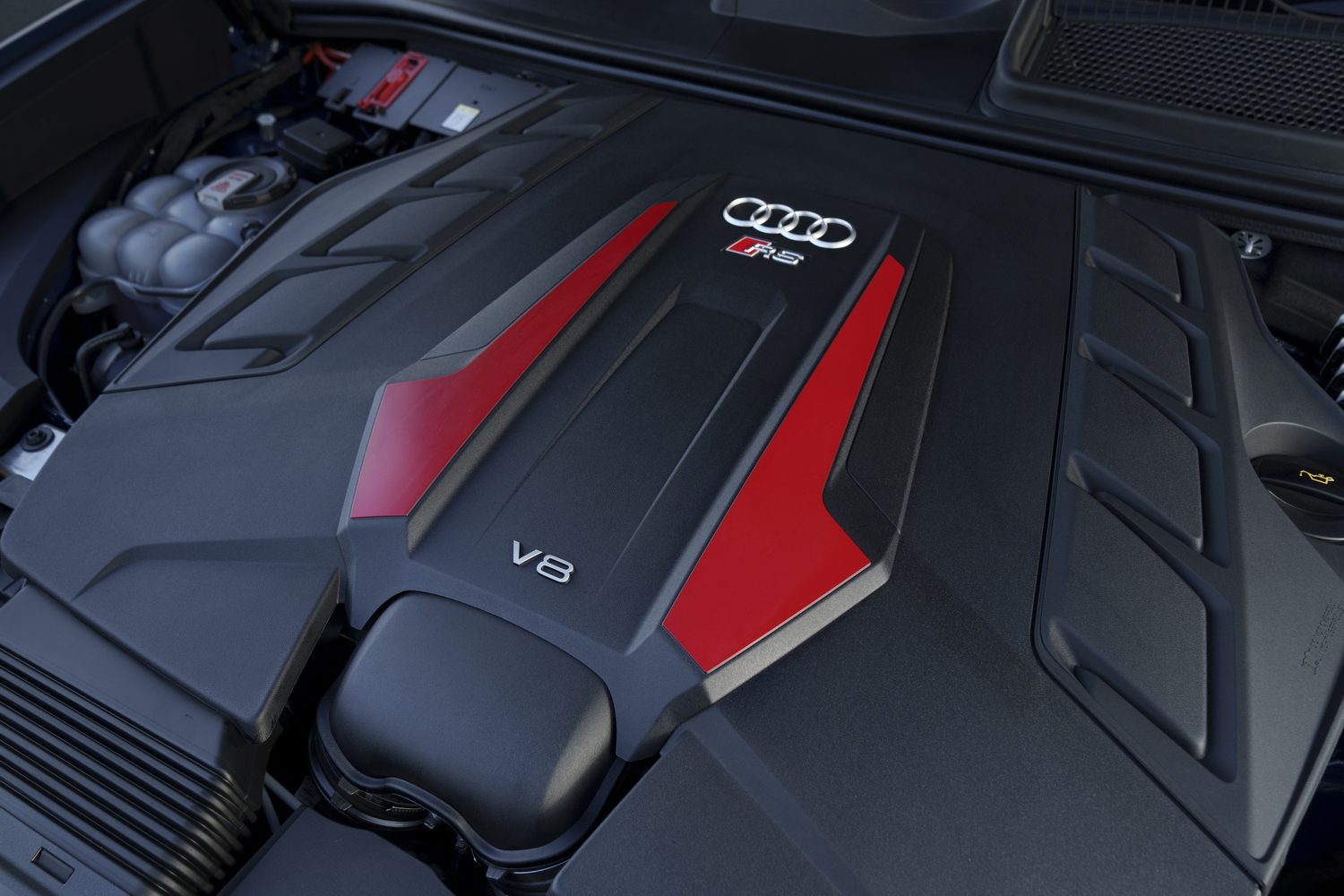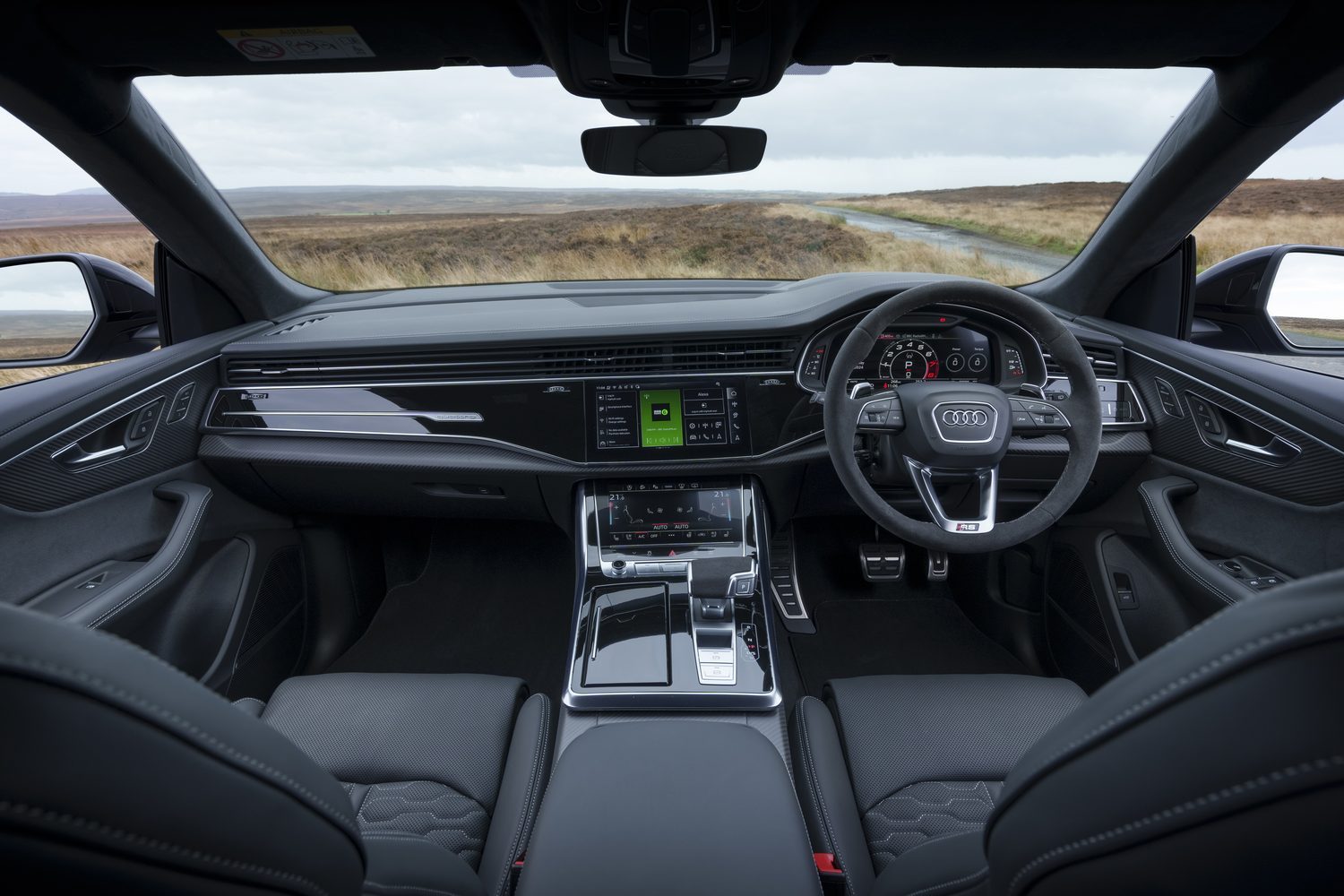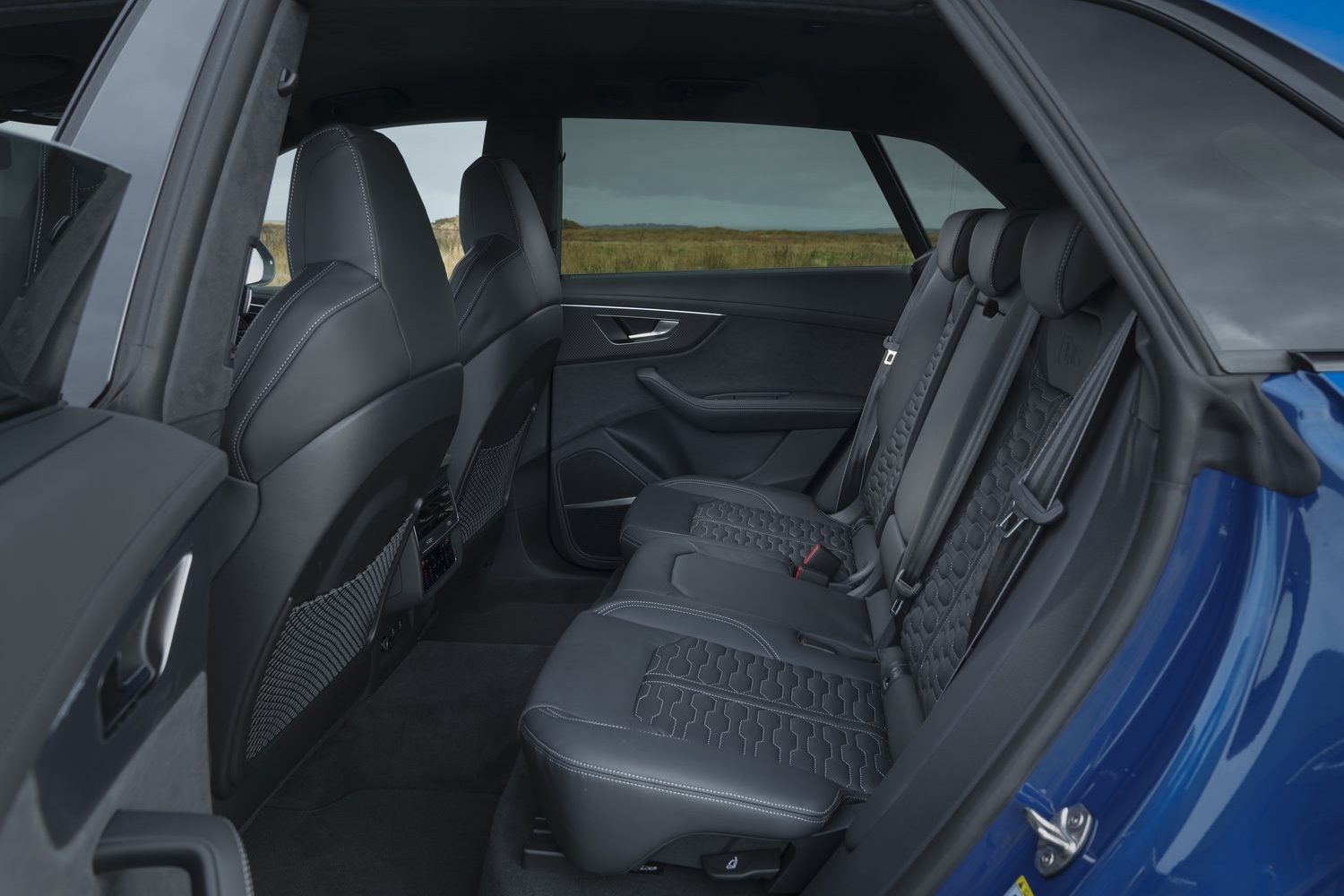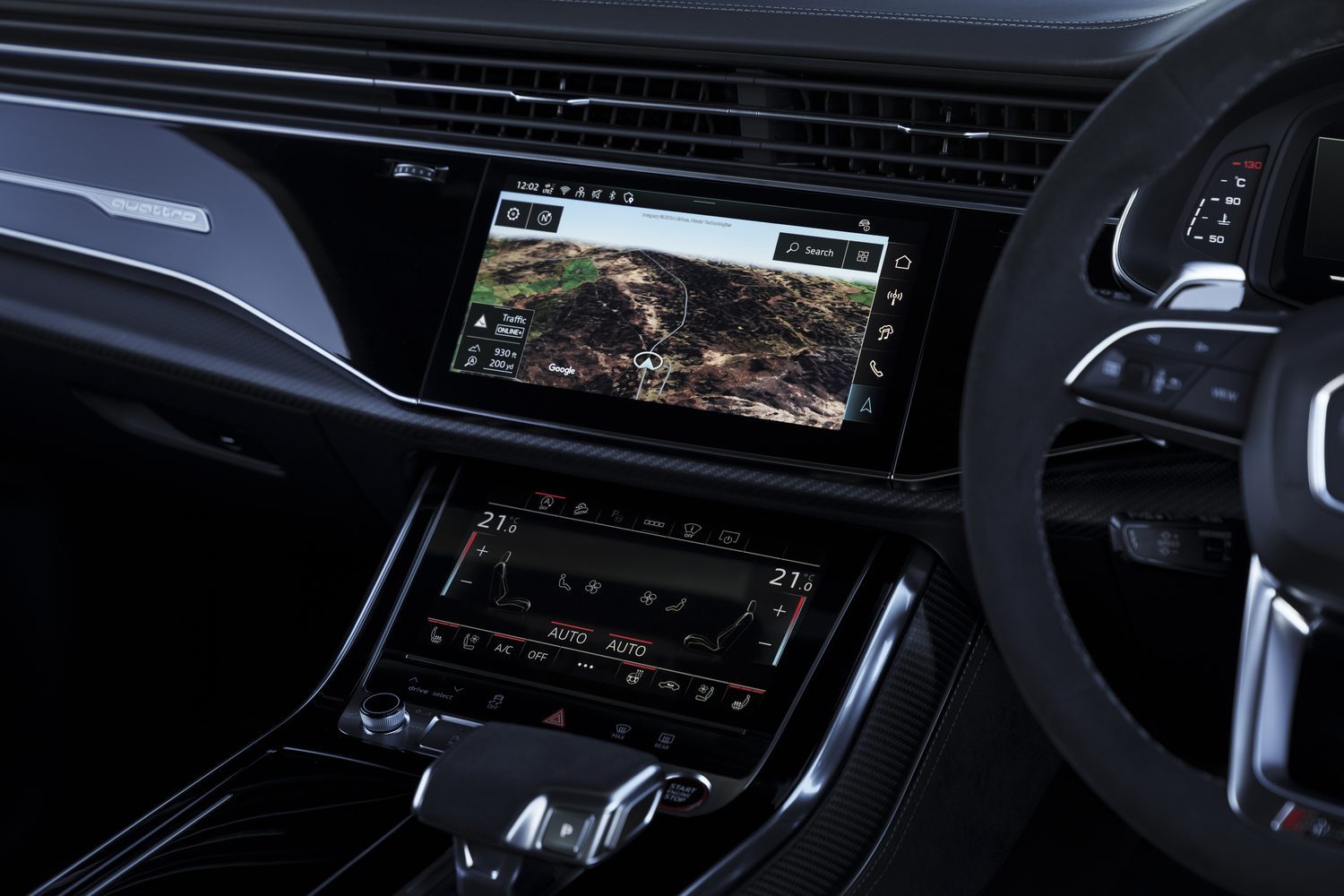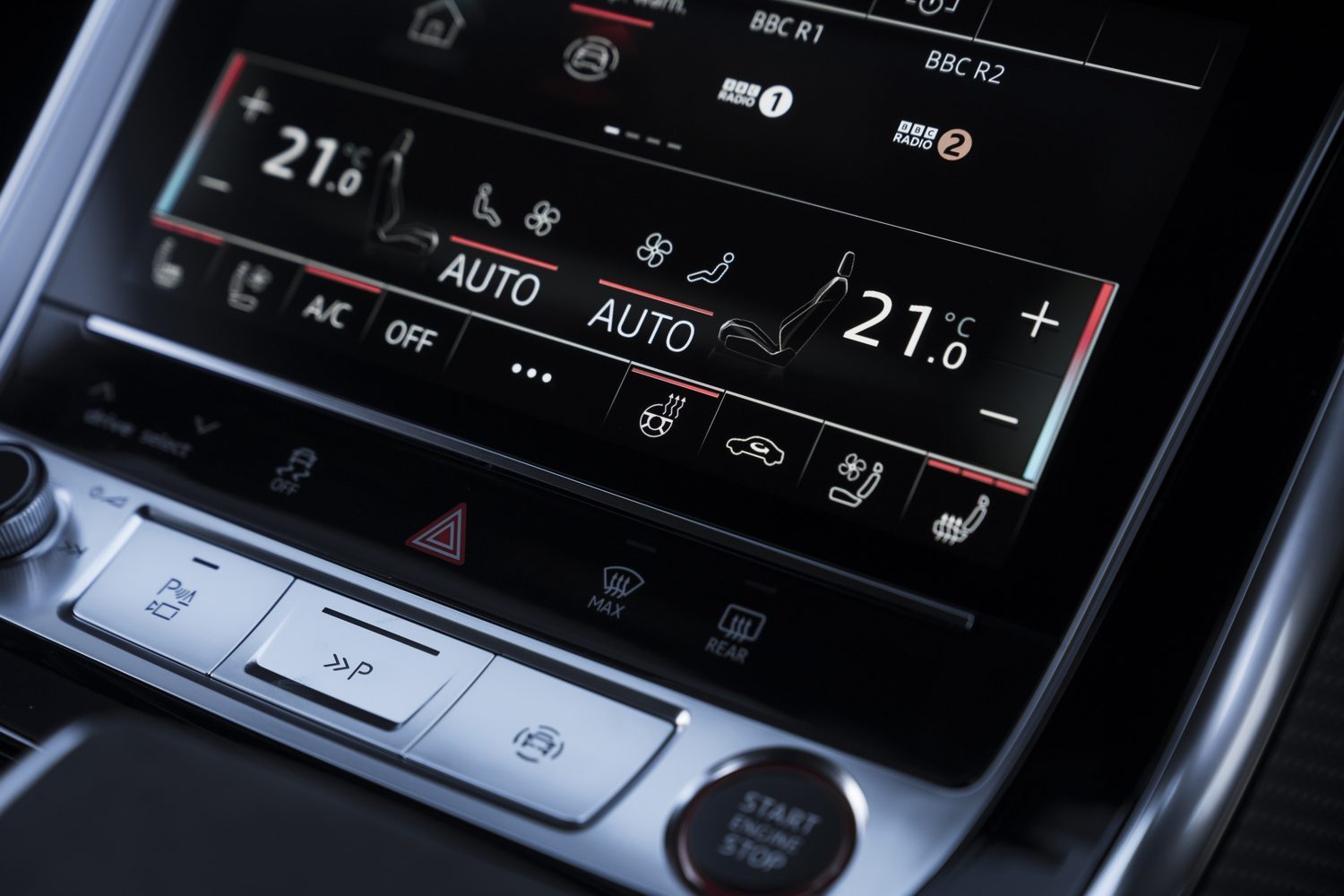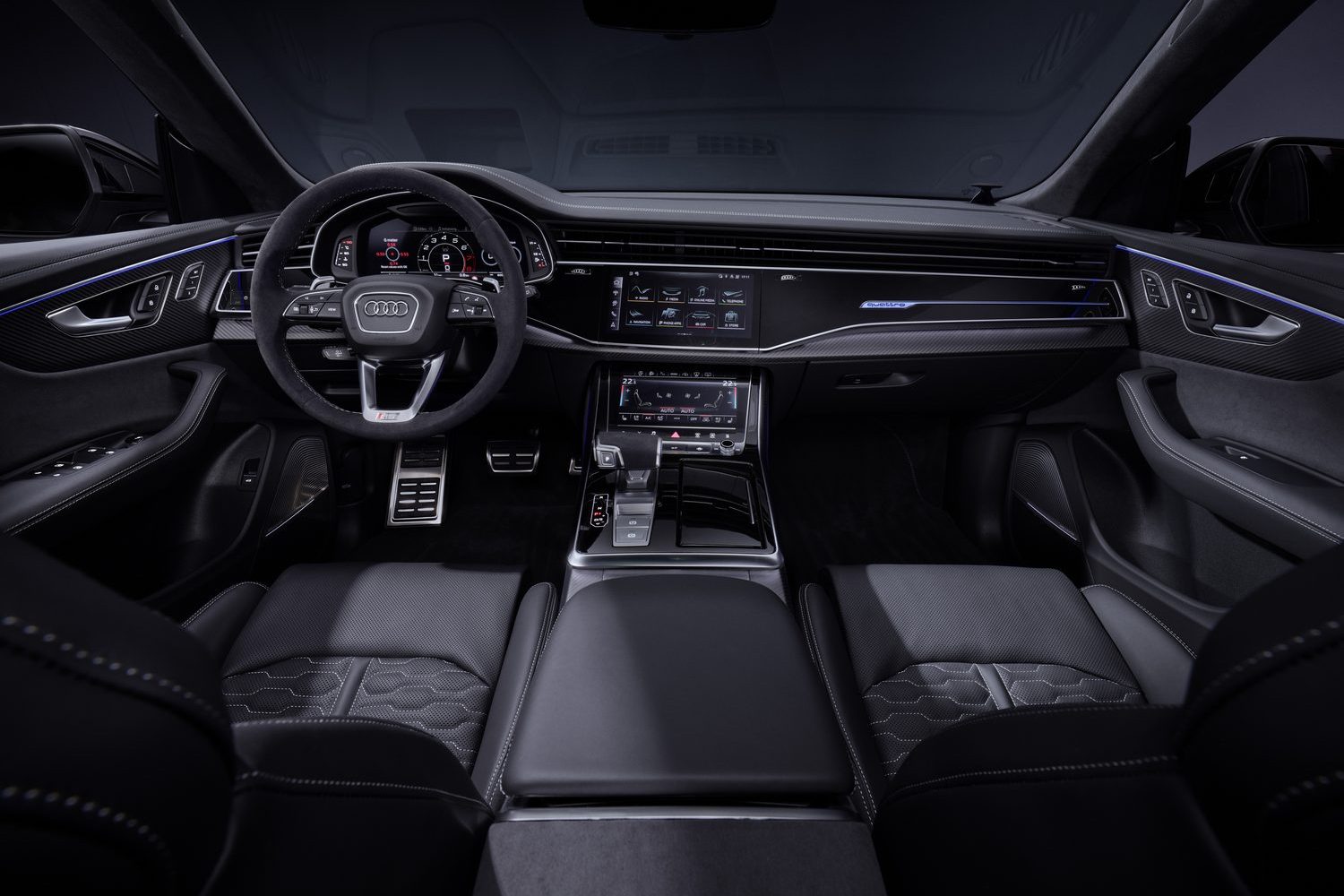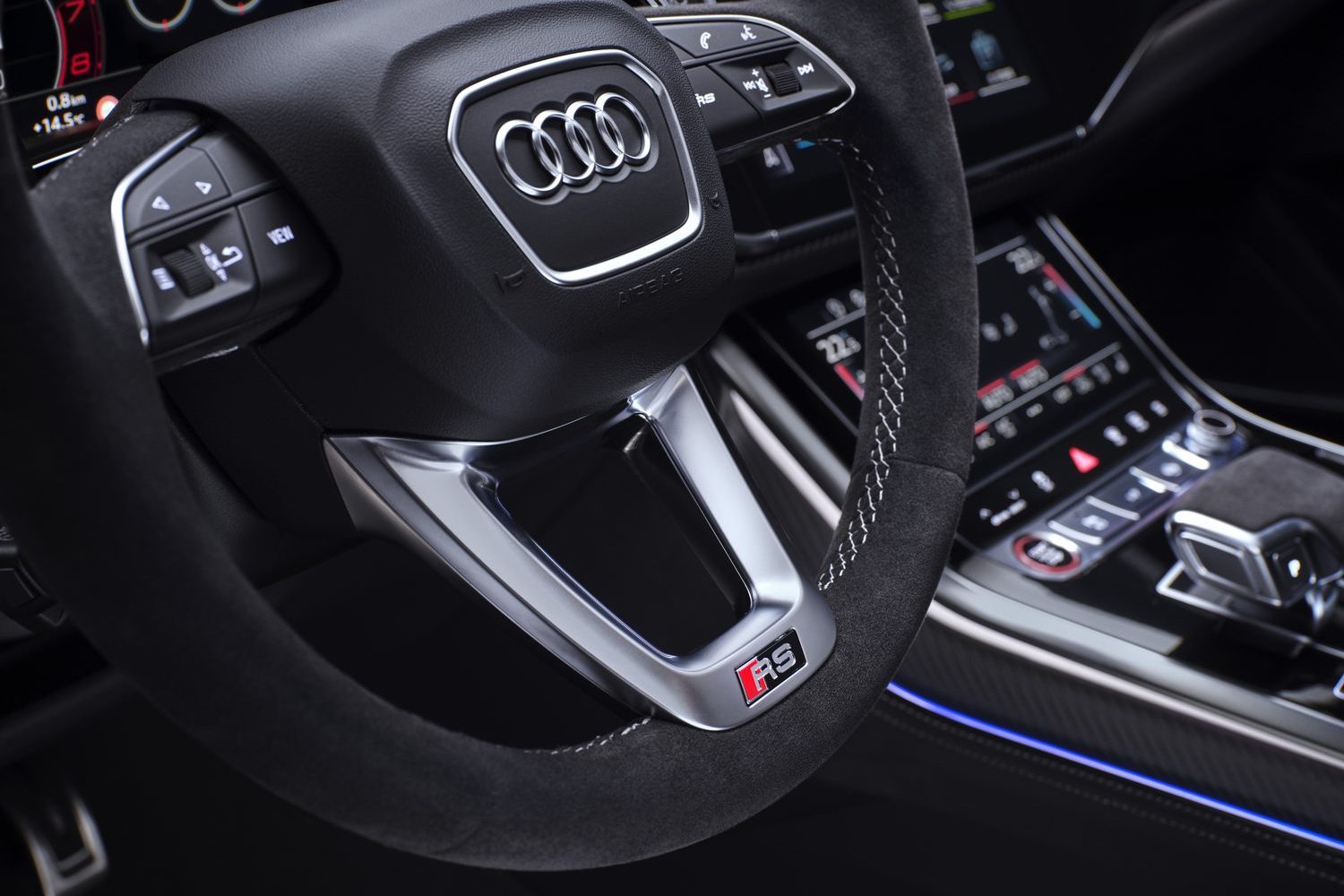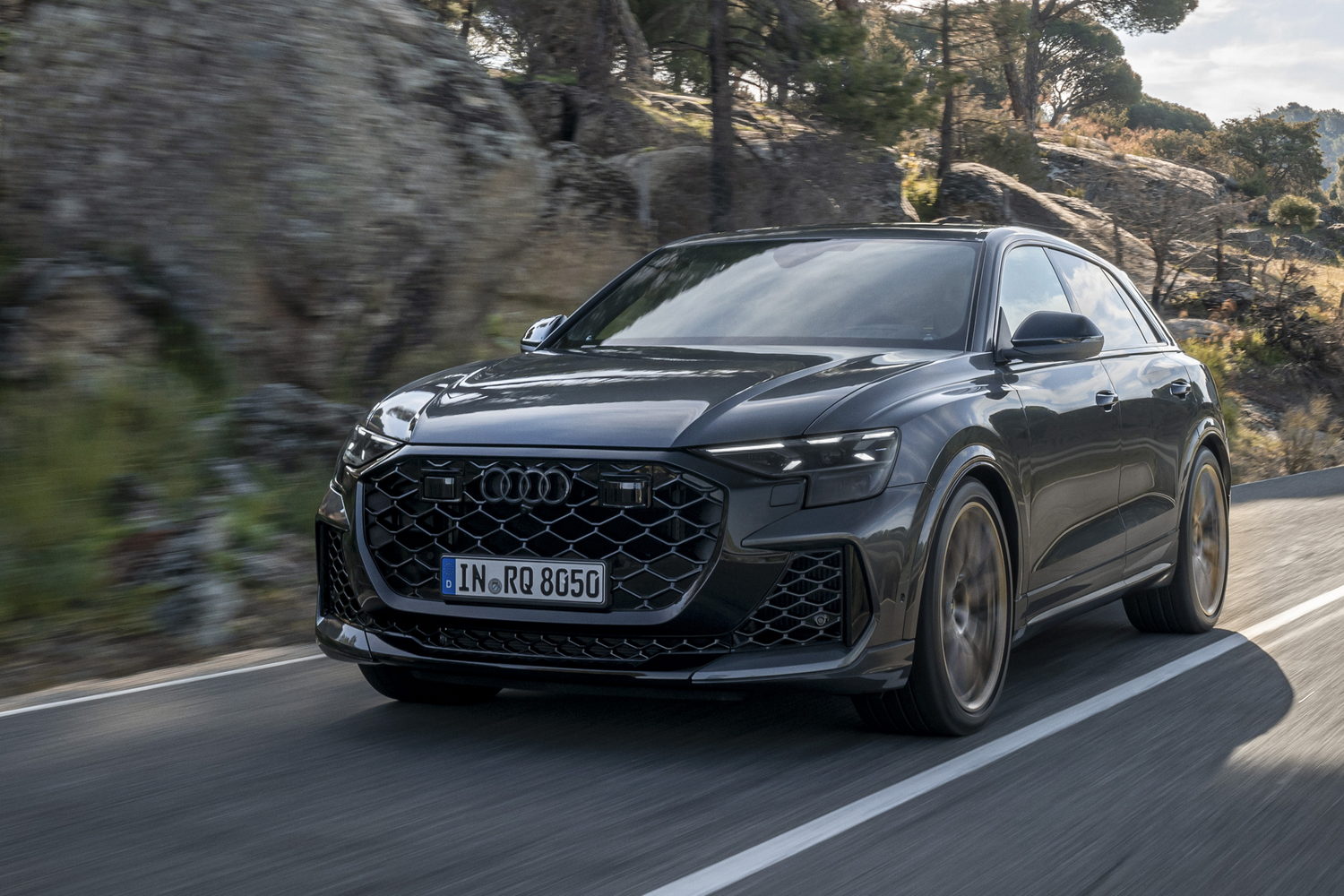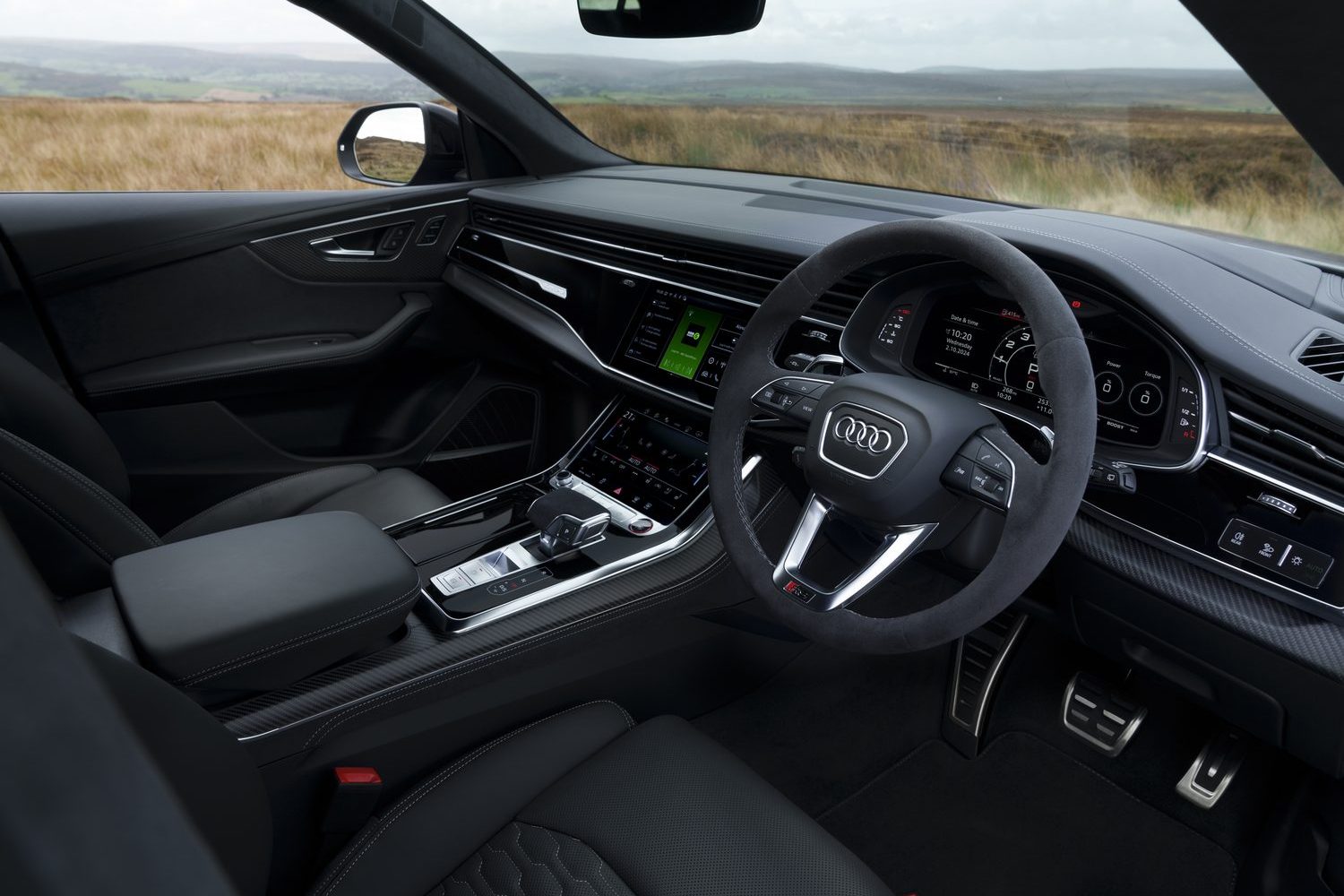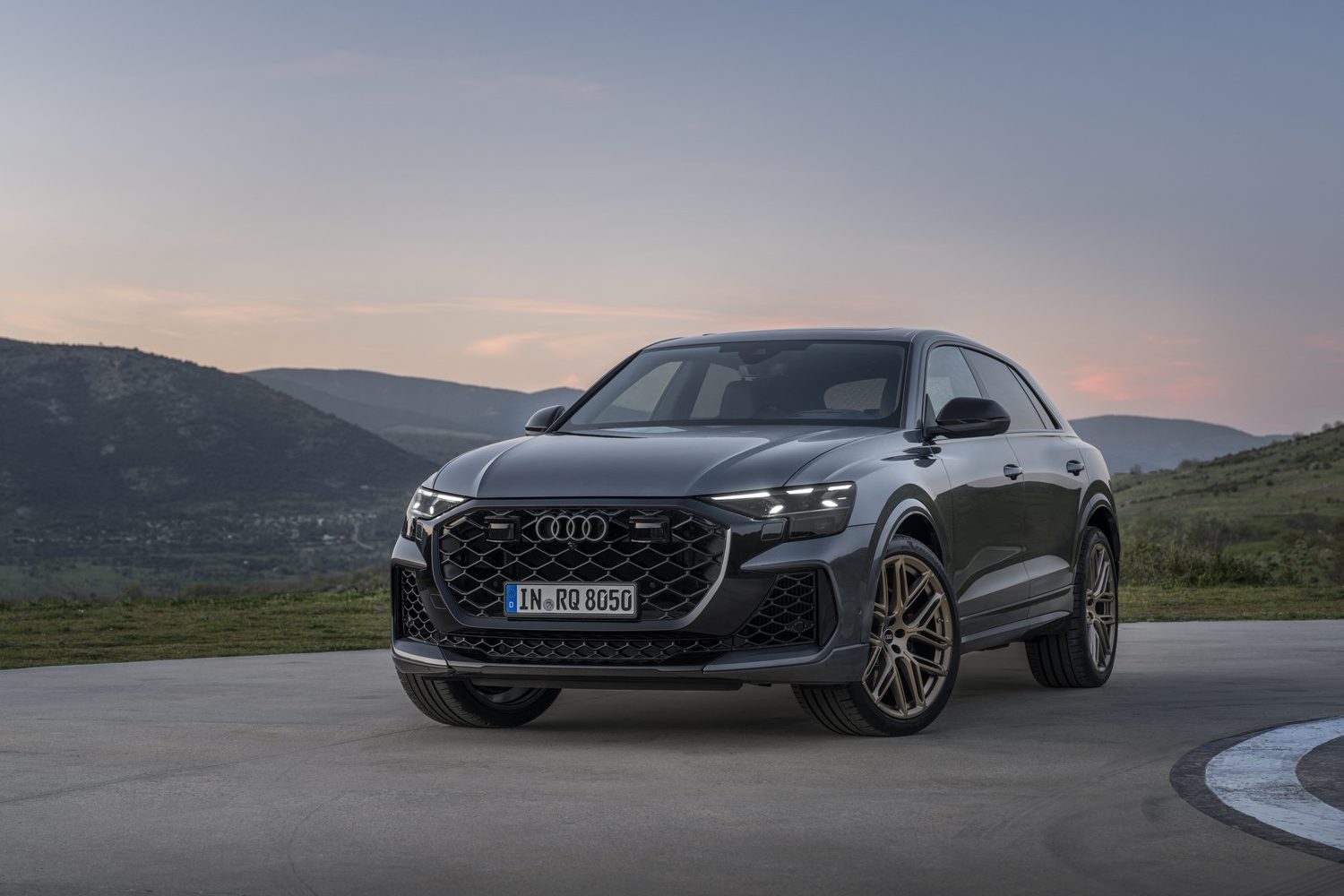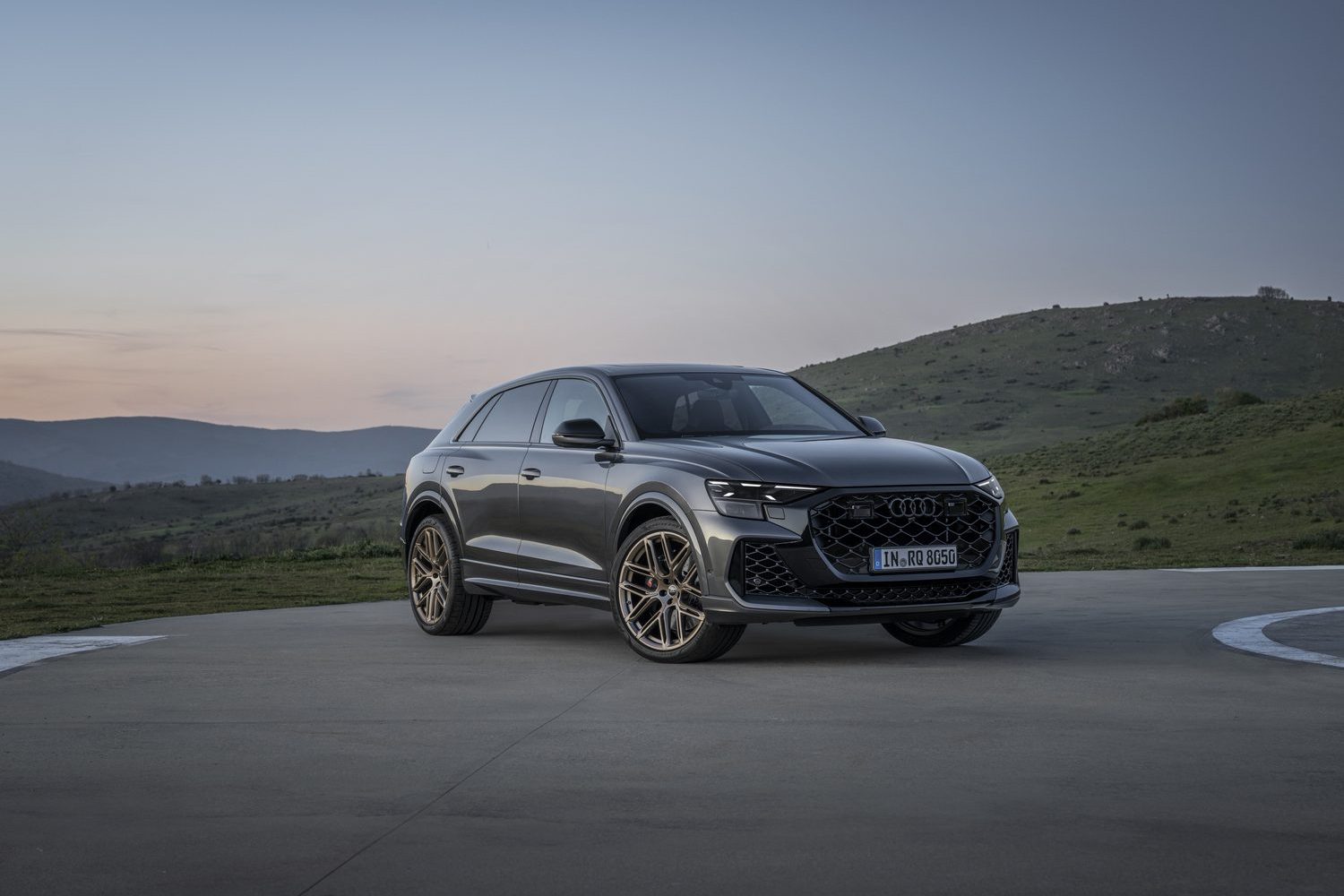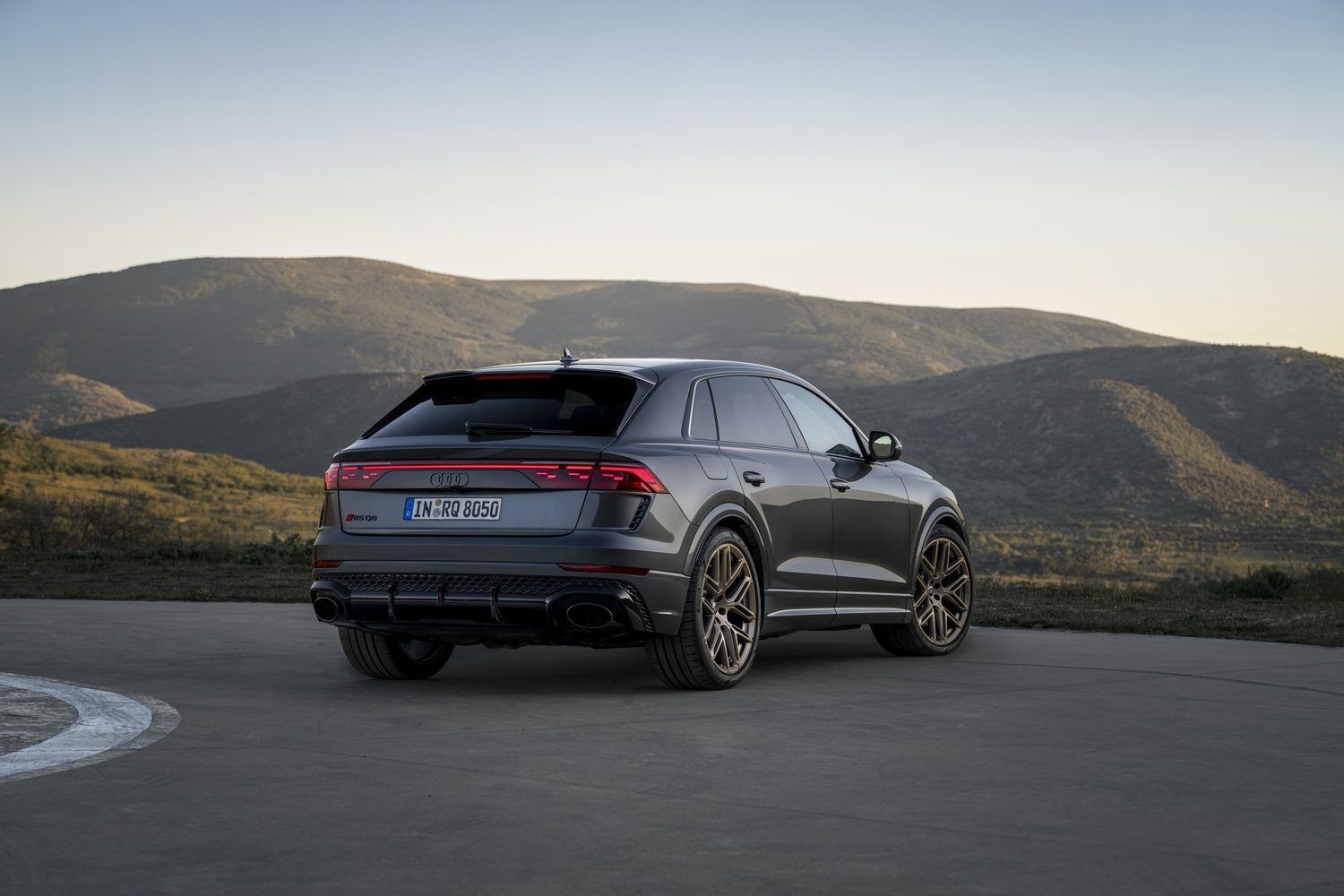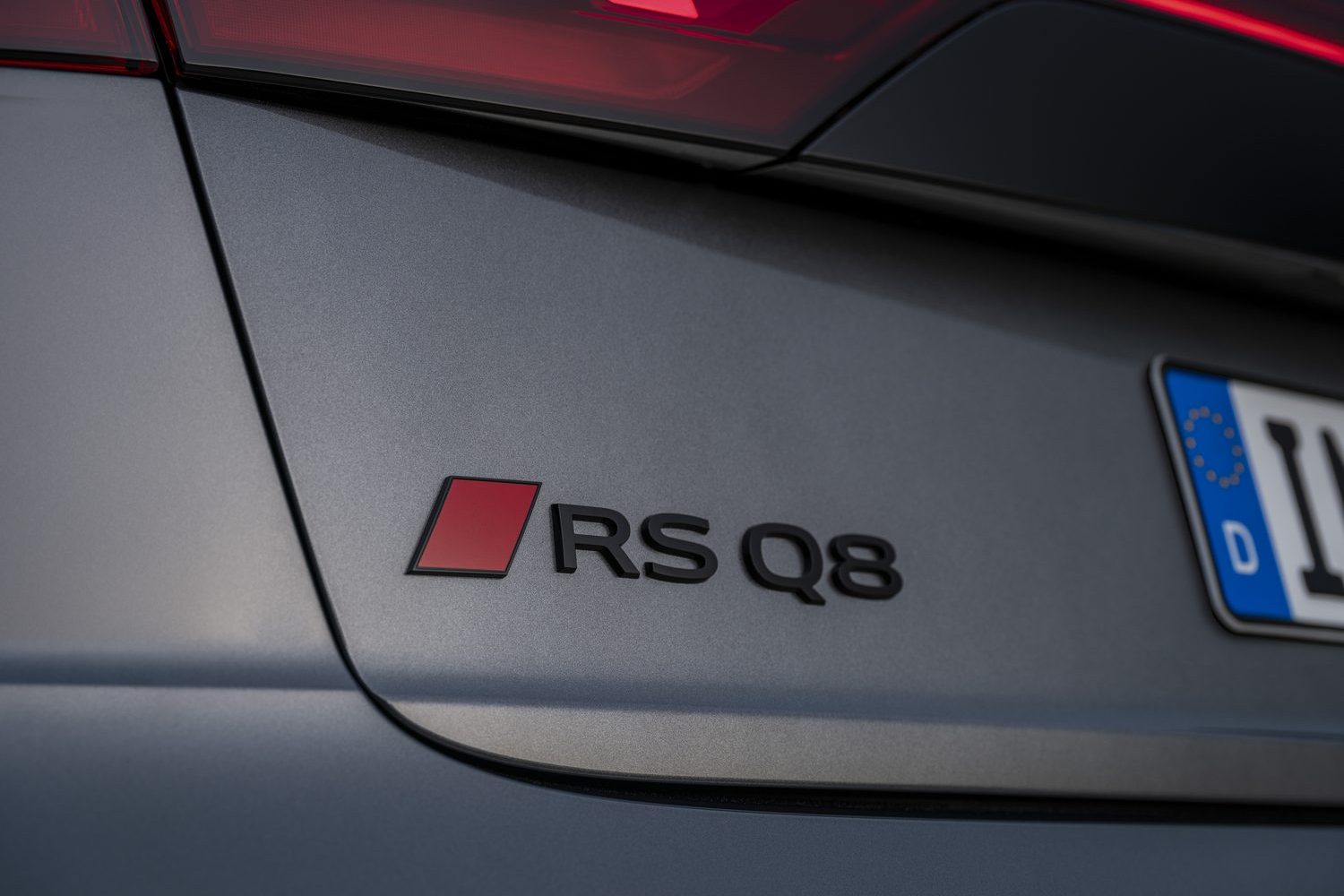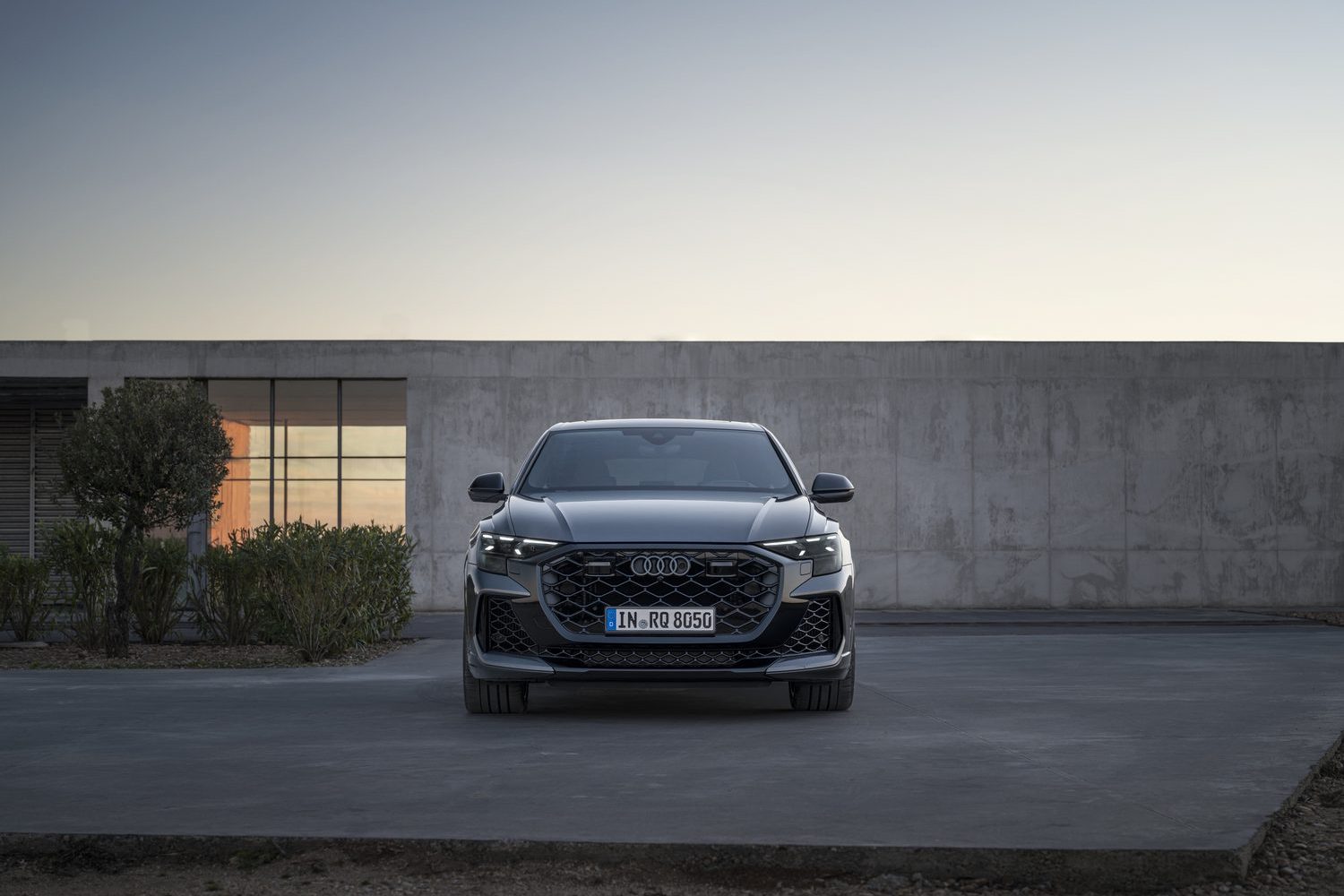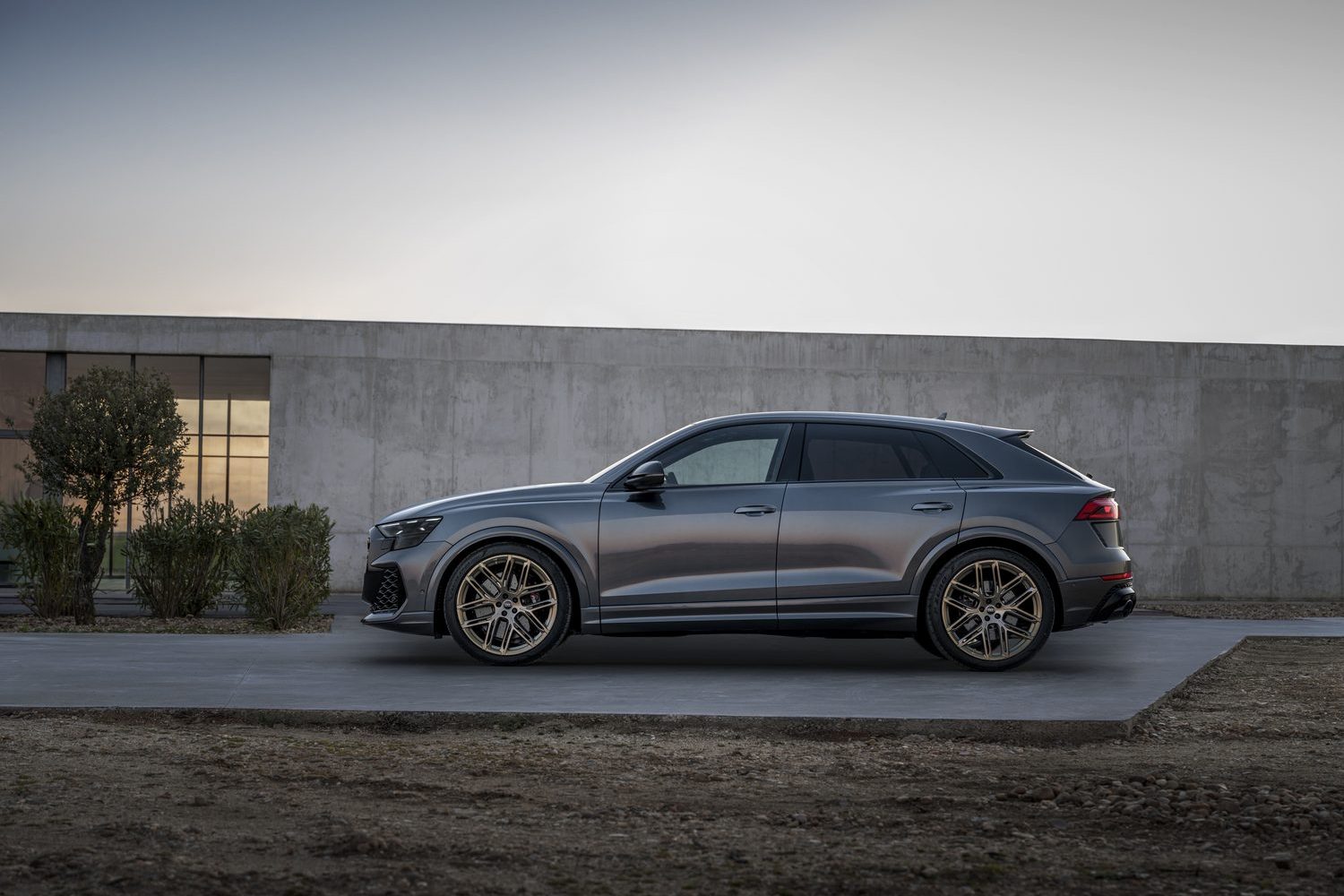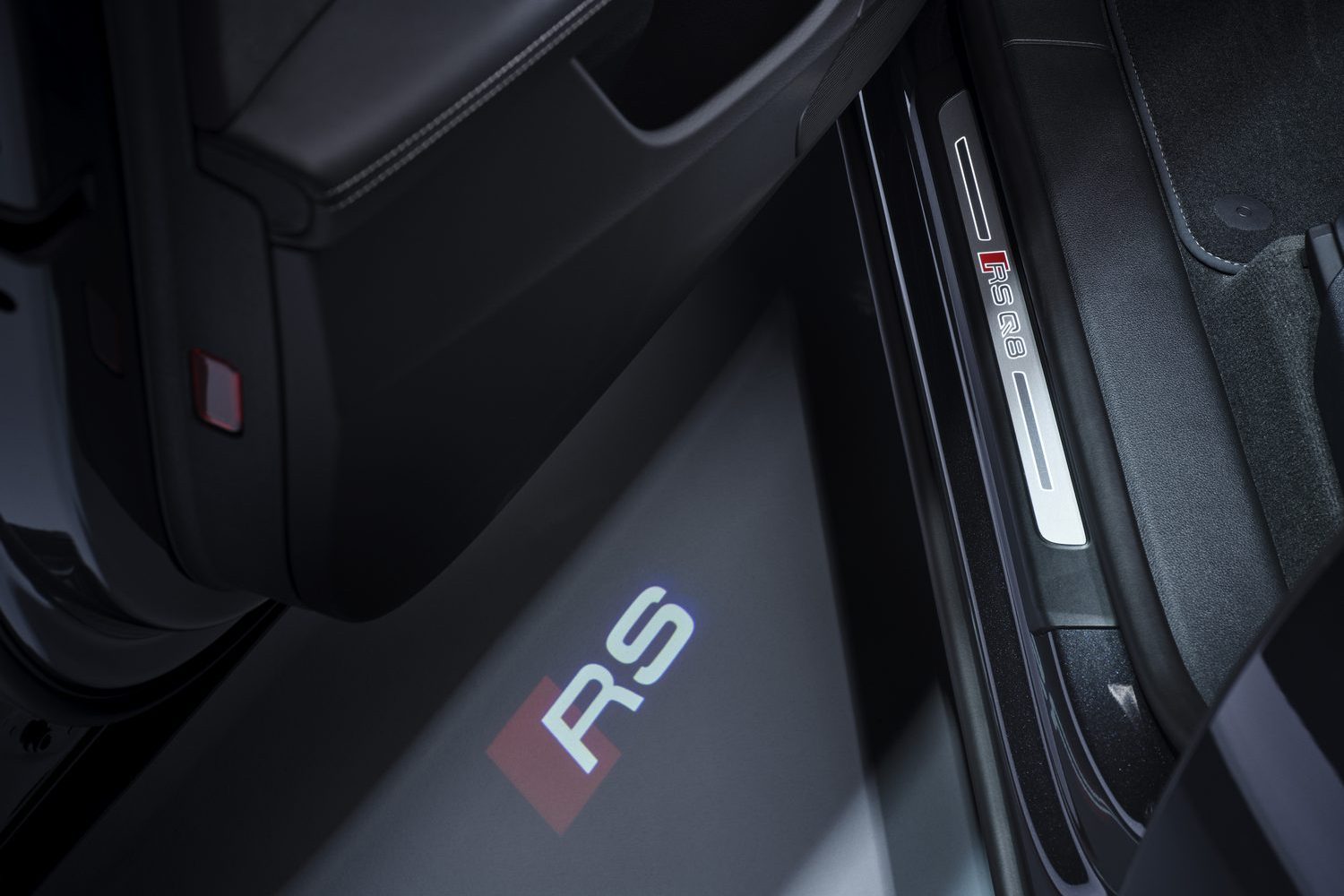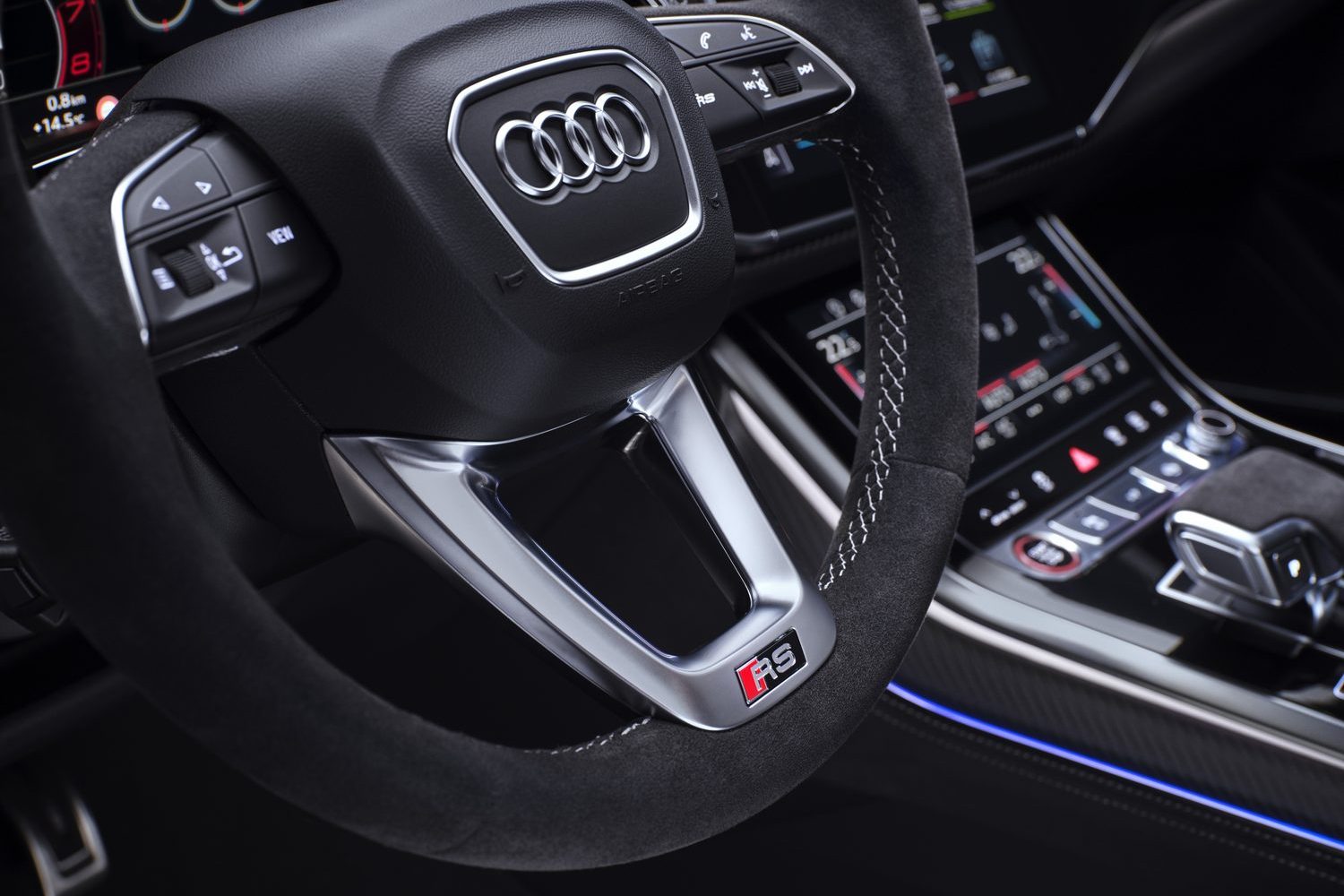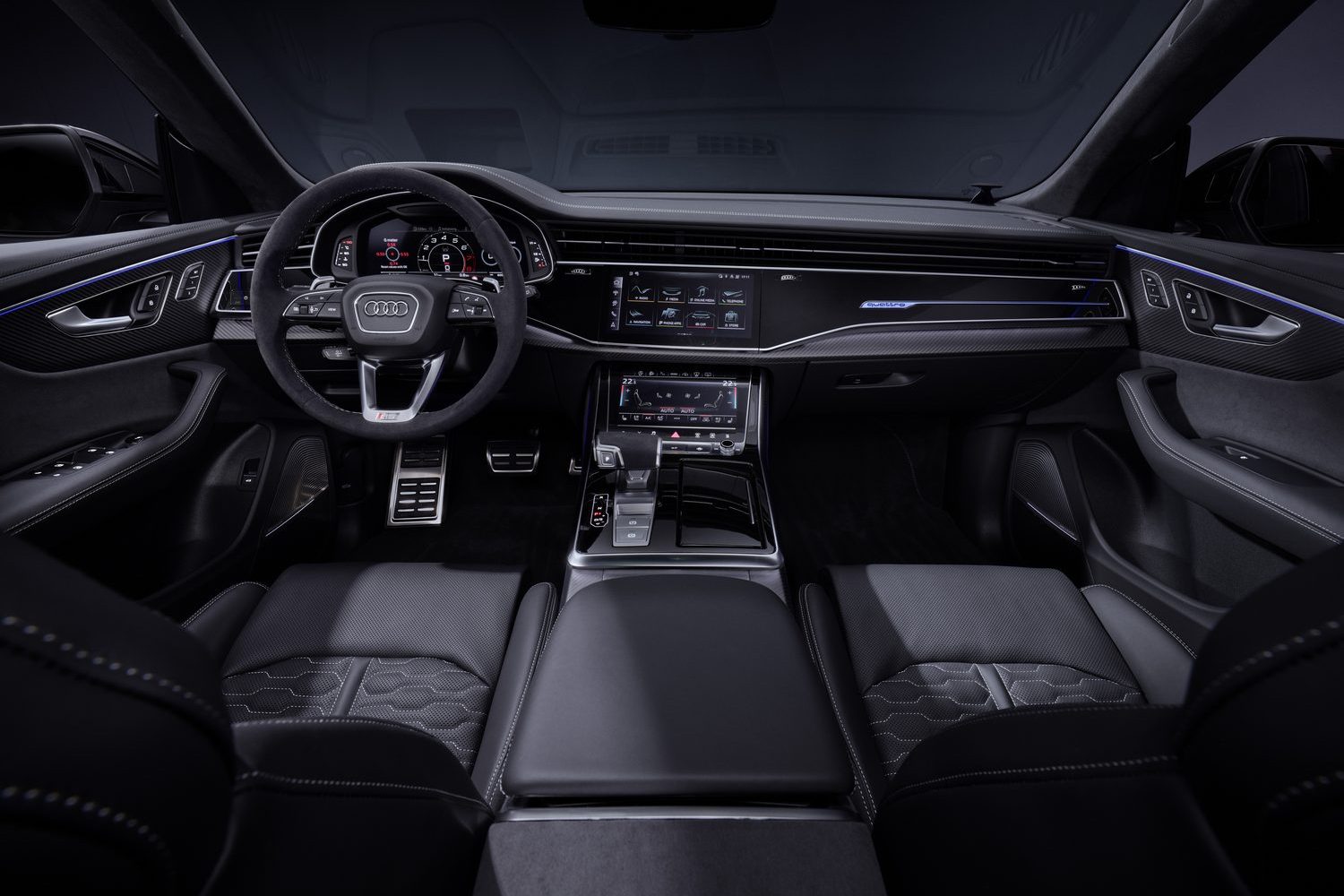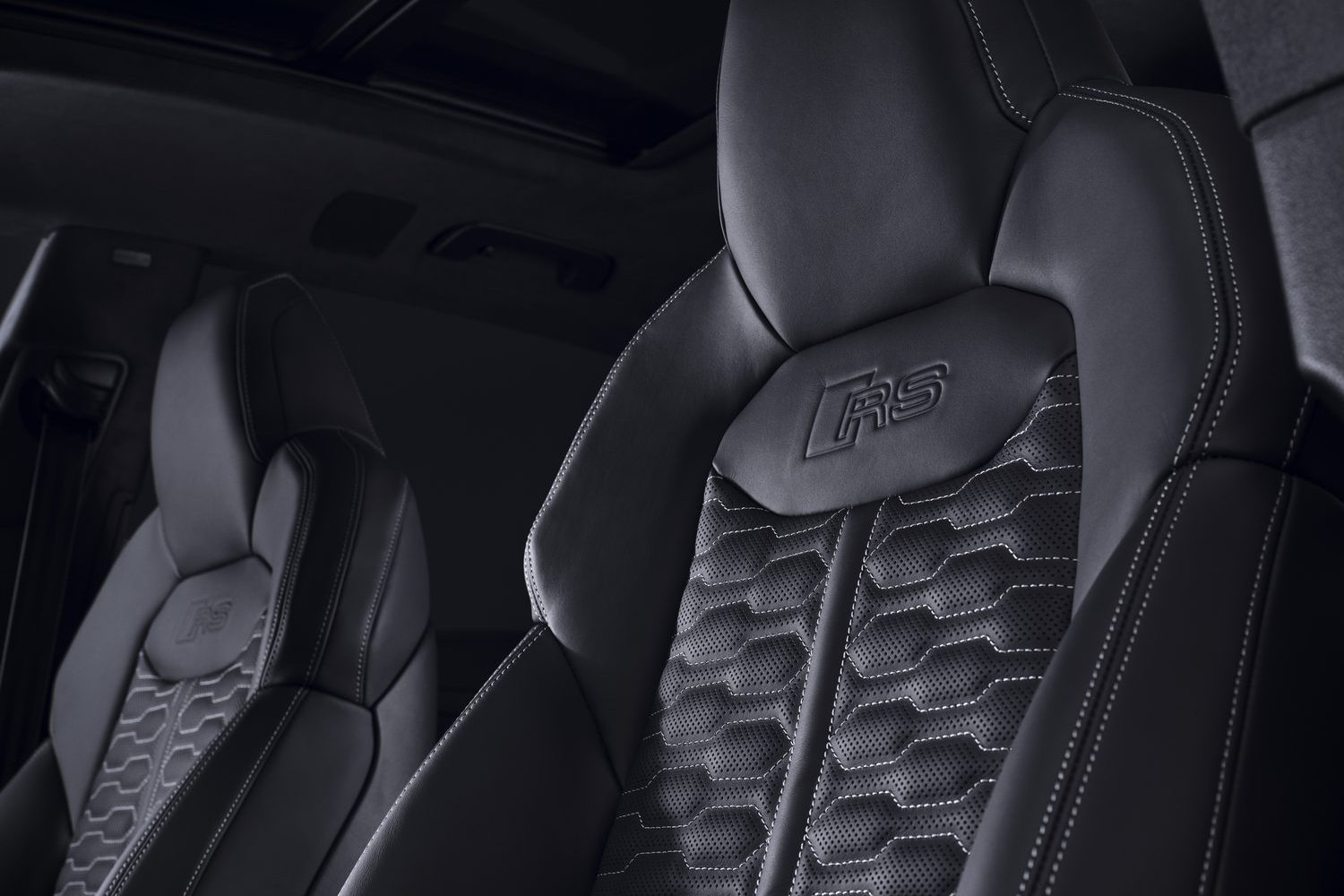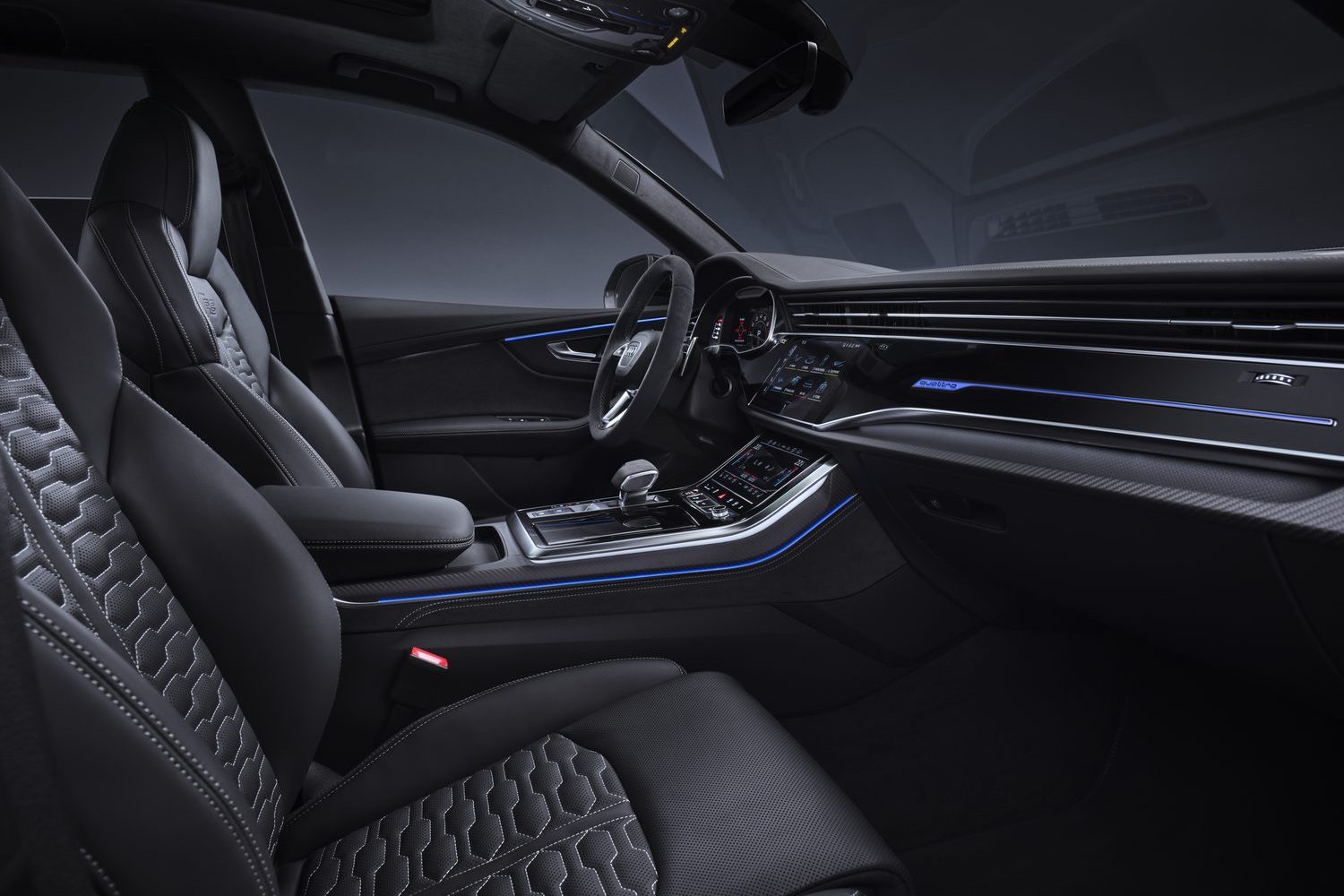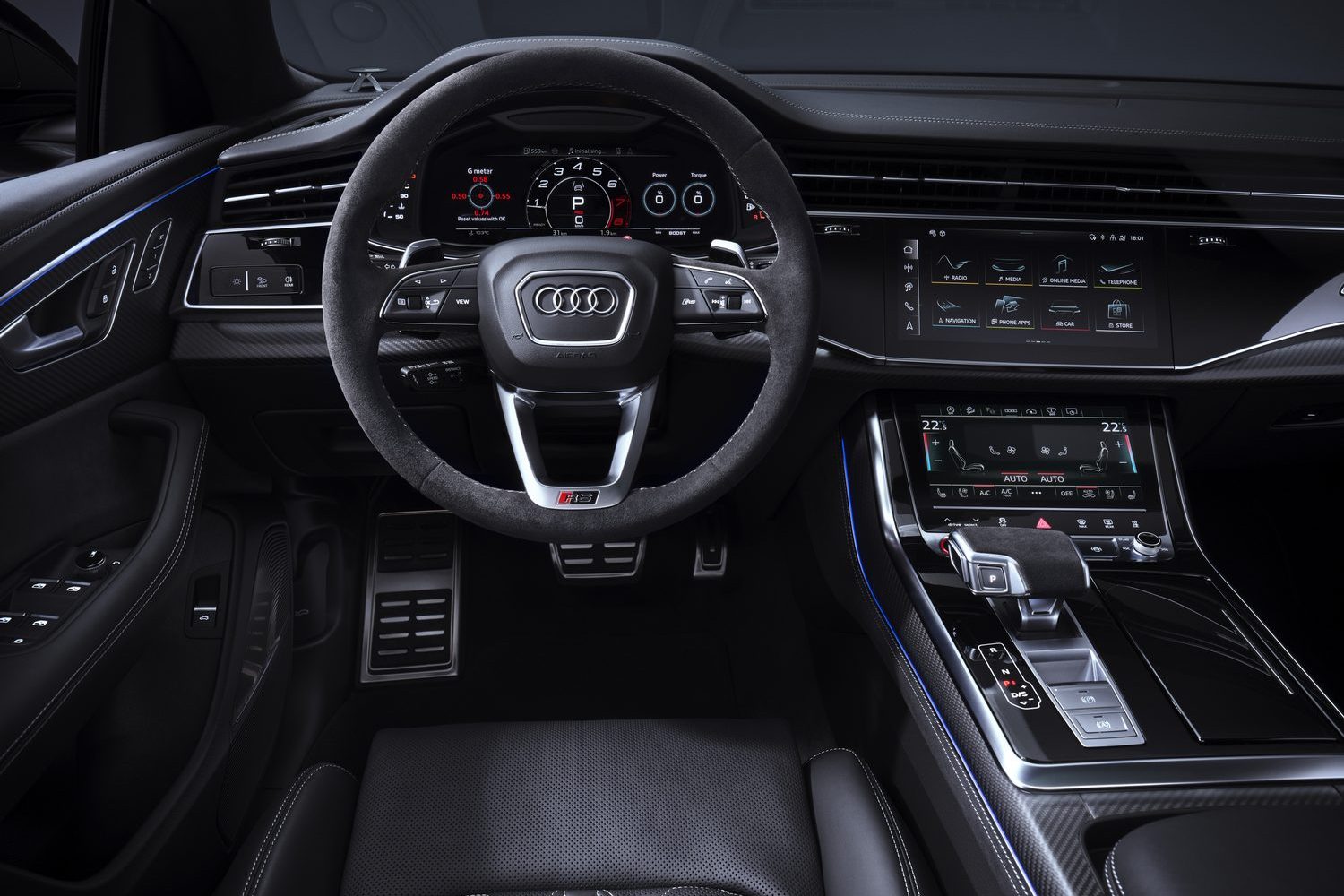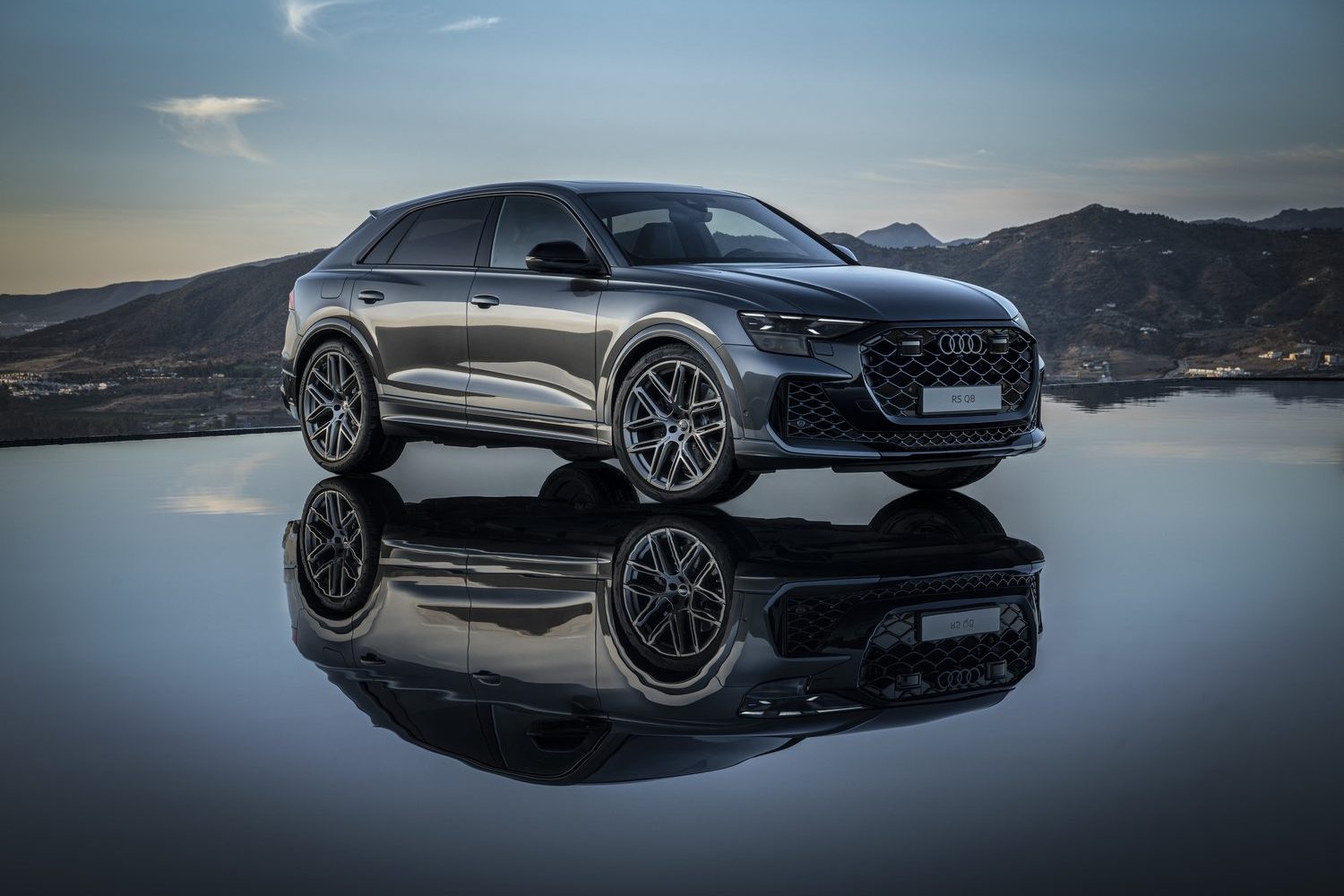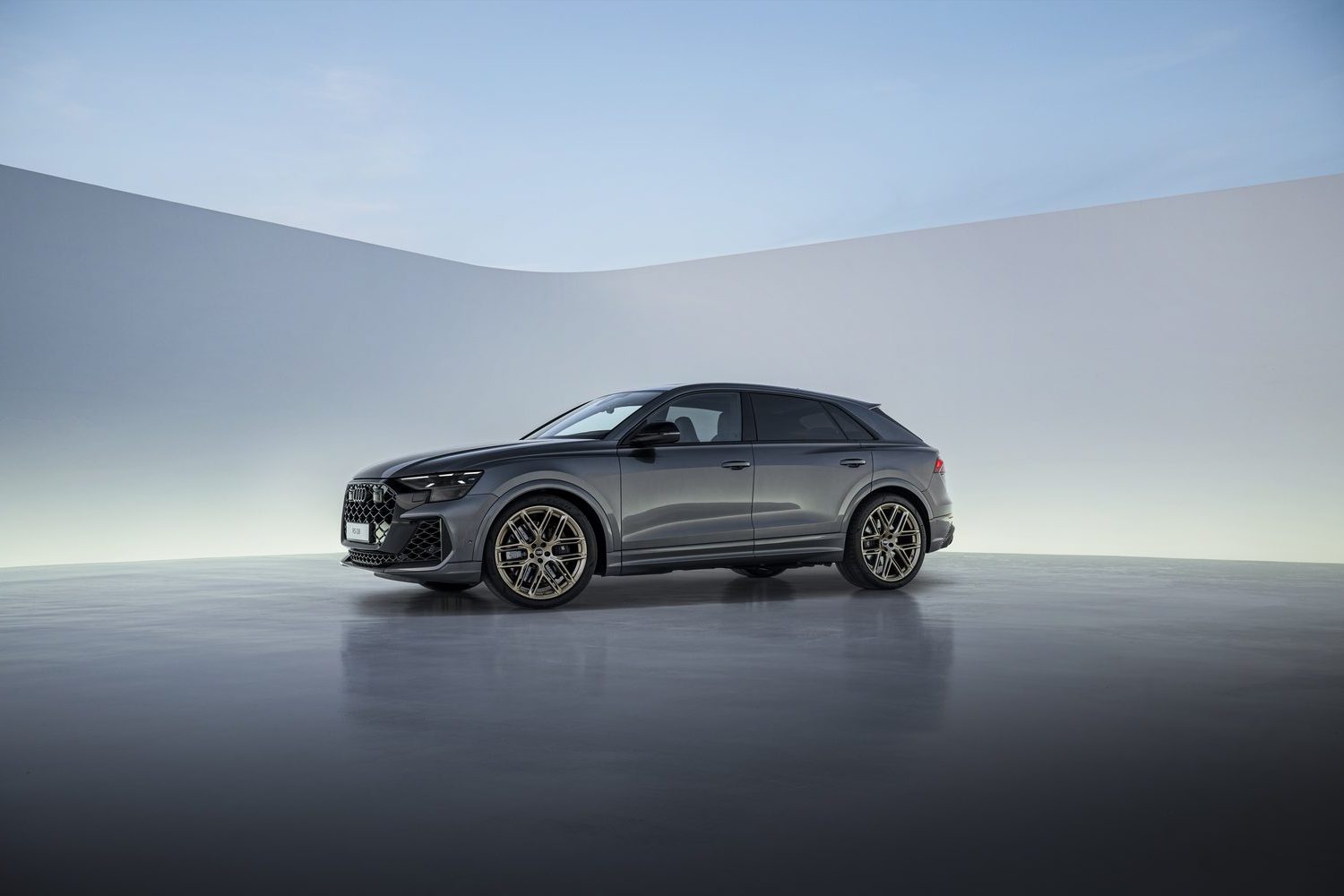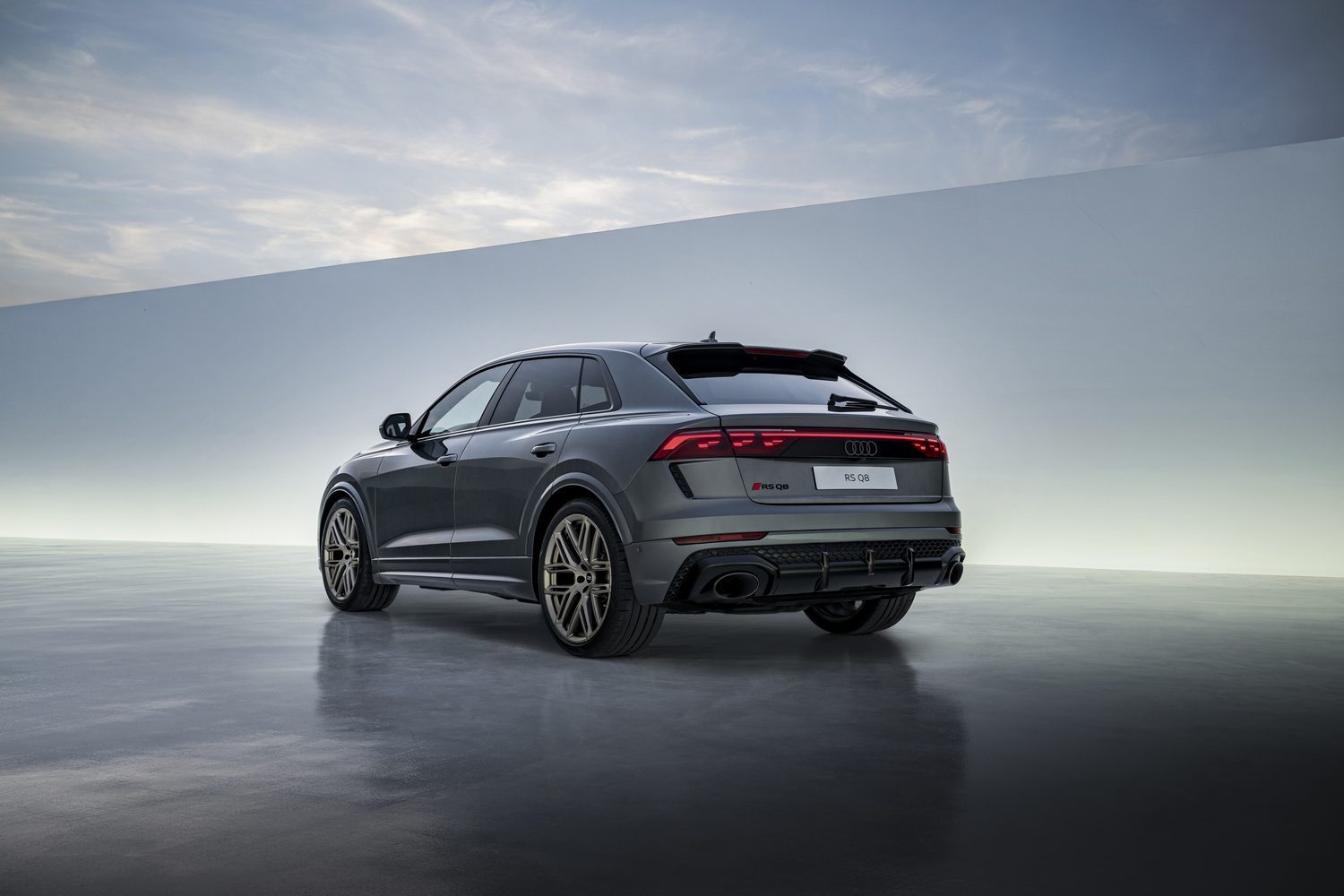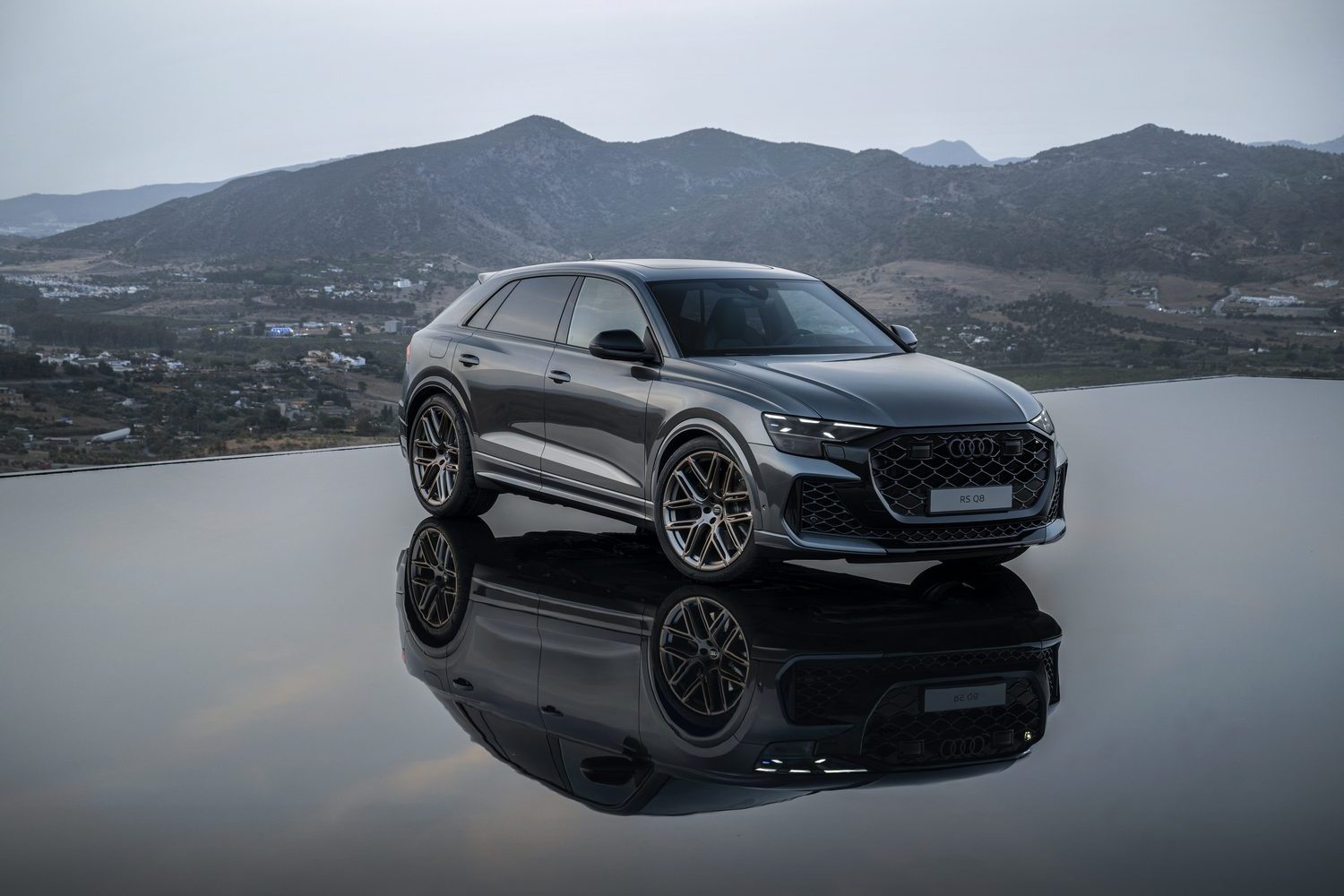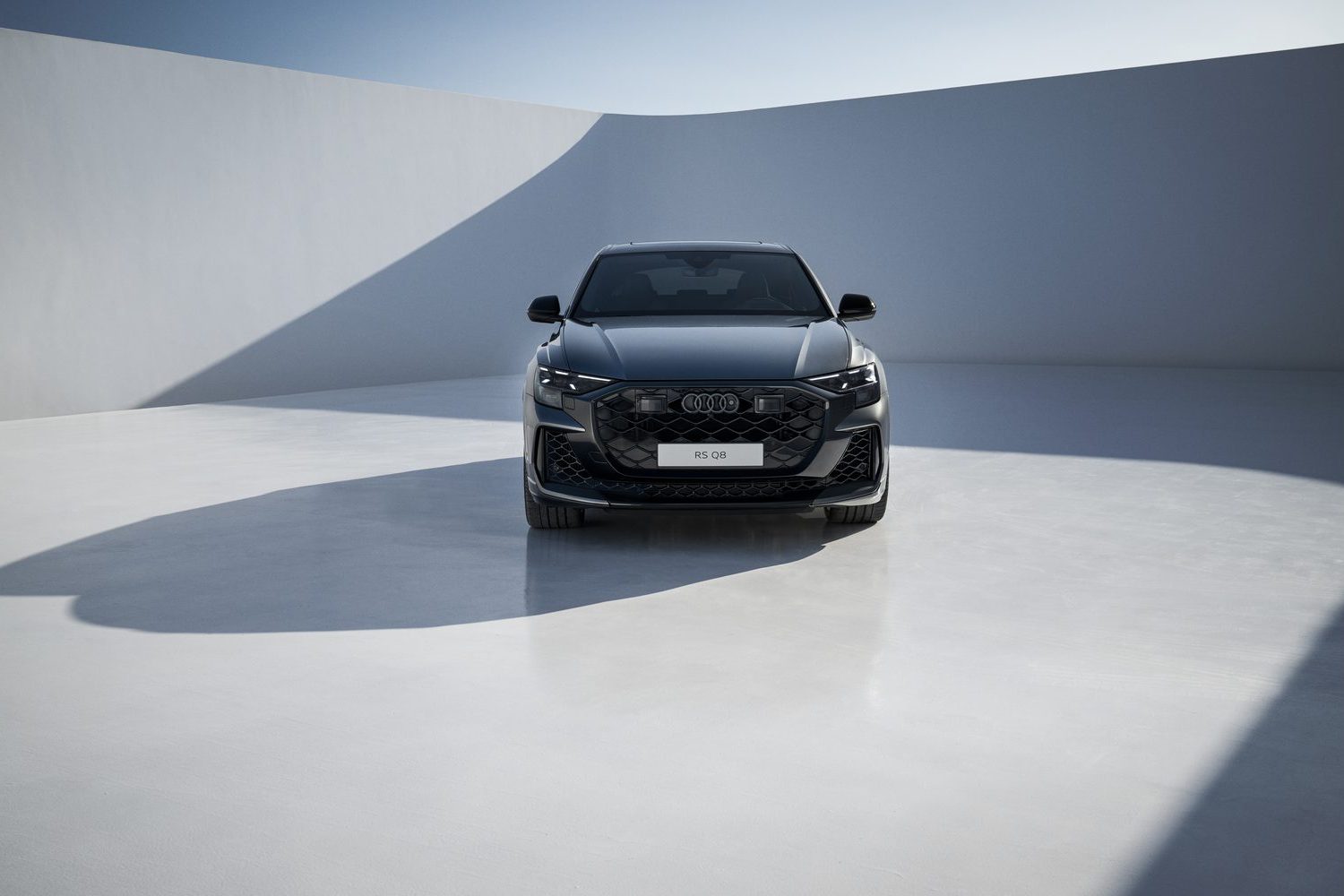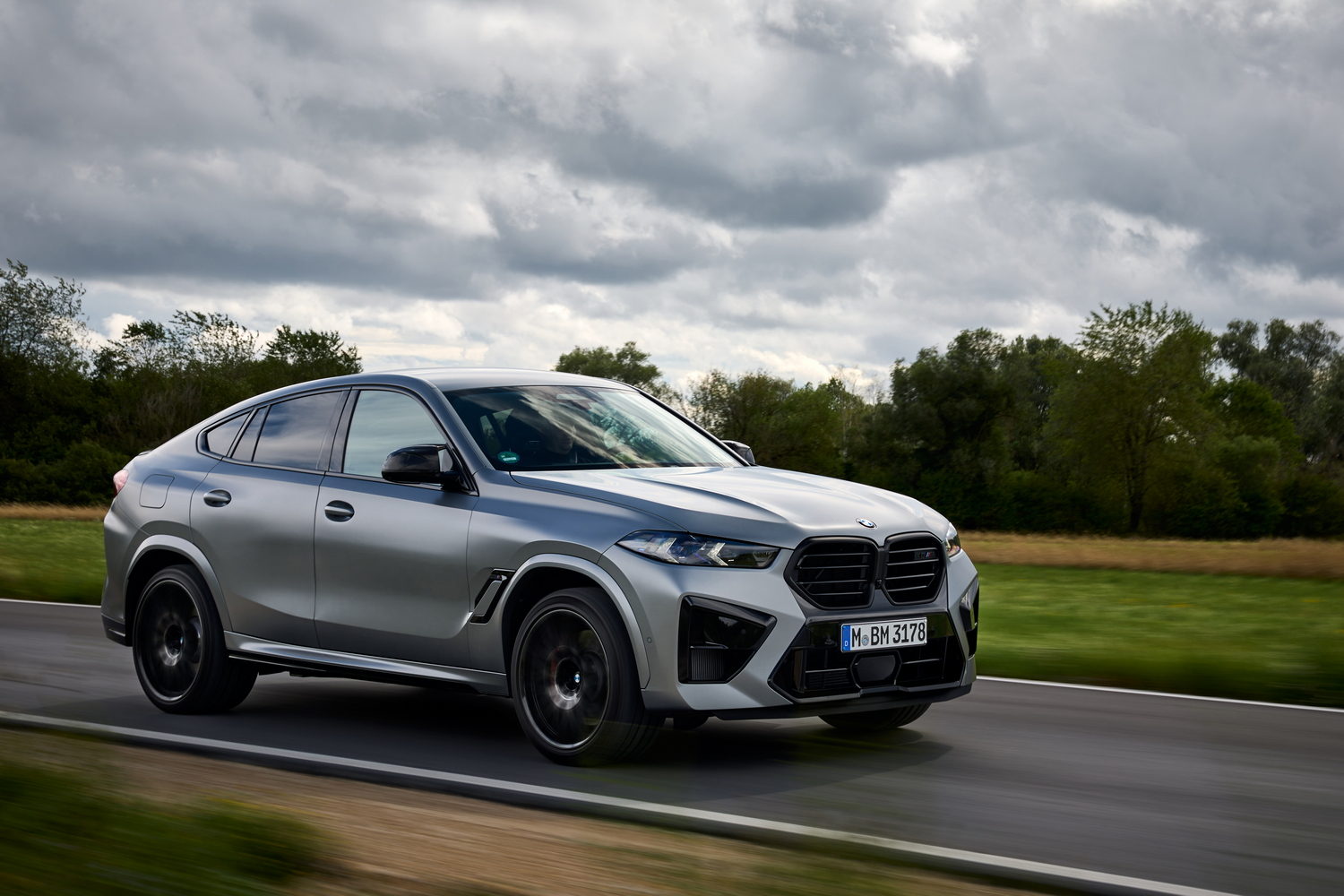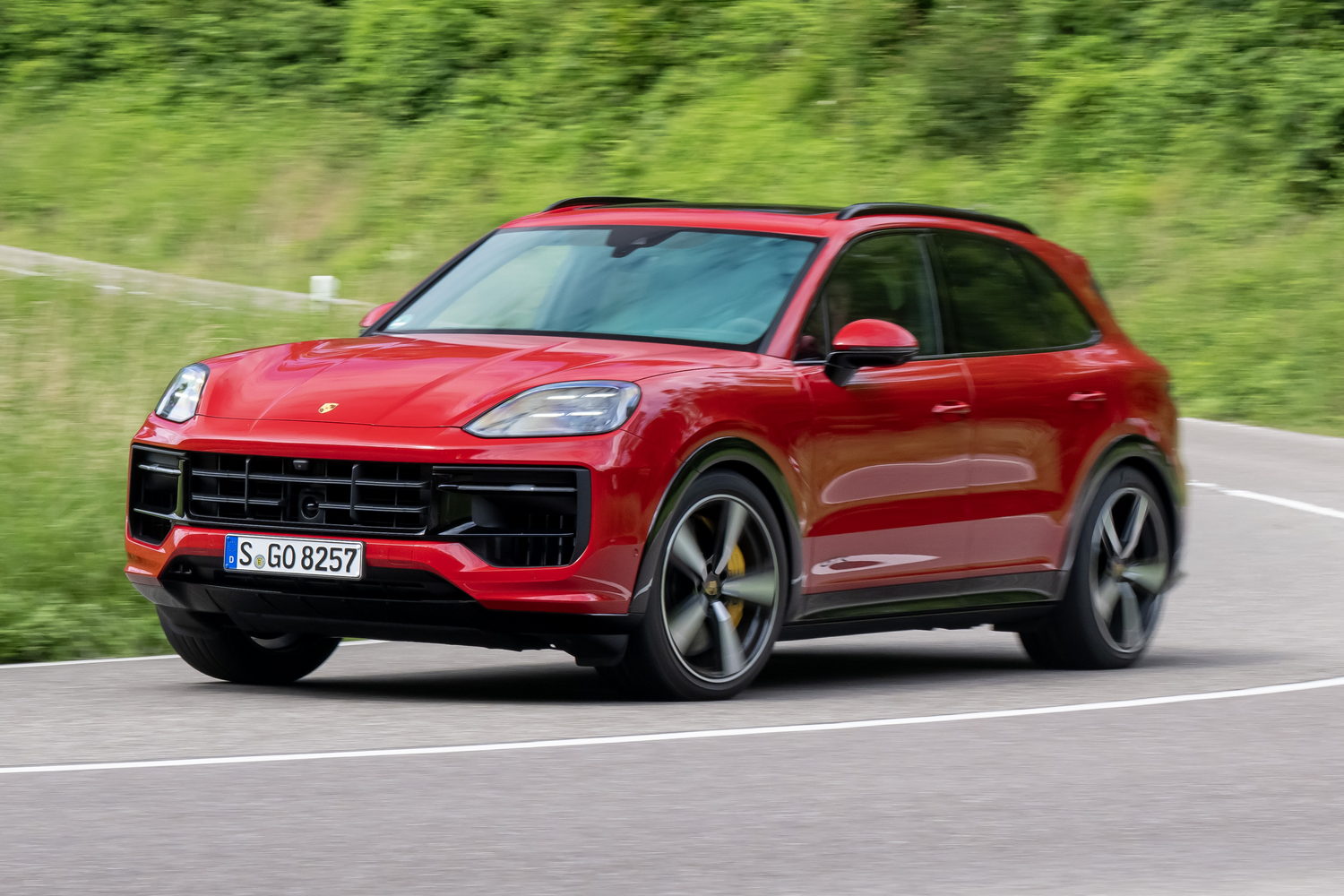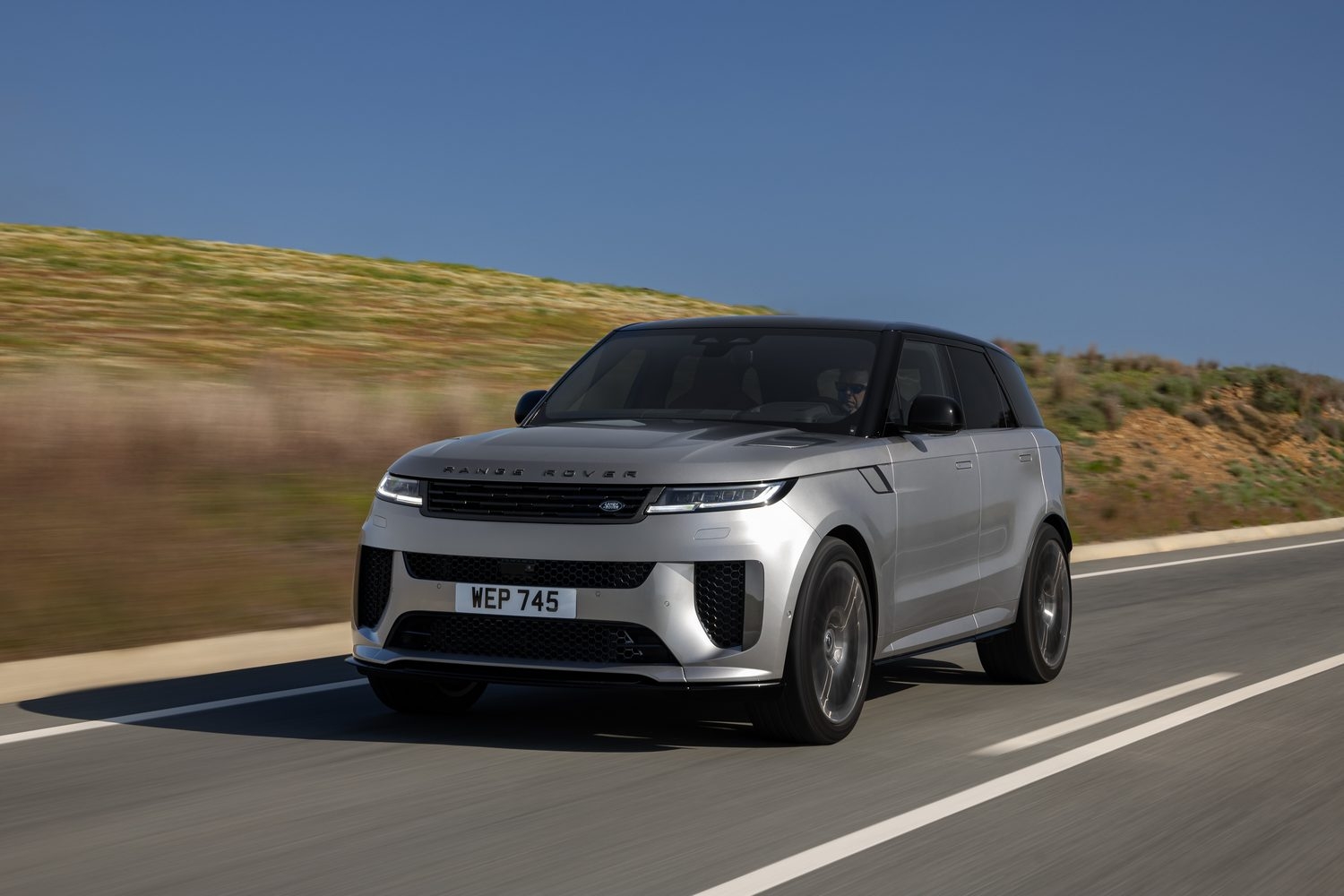Following last year’s gentle revamp of the Audi Q8 range, which primarily comprised a new grille, updated headlights and some fresh paint colours, the go-faster RS Q8 has also been updated. Normally, a light update such as this wouldn’t engender much excitement in the CompleteCar.ie office, but when you get your first chance to drive a thumping V8 luxury SUV with 600hp, you jump at it.
We’ve already sampled the entry-level 3.0-litre diesel and the 4.0-litre petrol-powered SQ8, but can the high-powered RS version, here to rival the Range Rover Sport SV and Porsche Cayenne GTS, really be the most appealing option of them all?
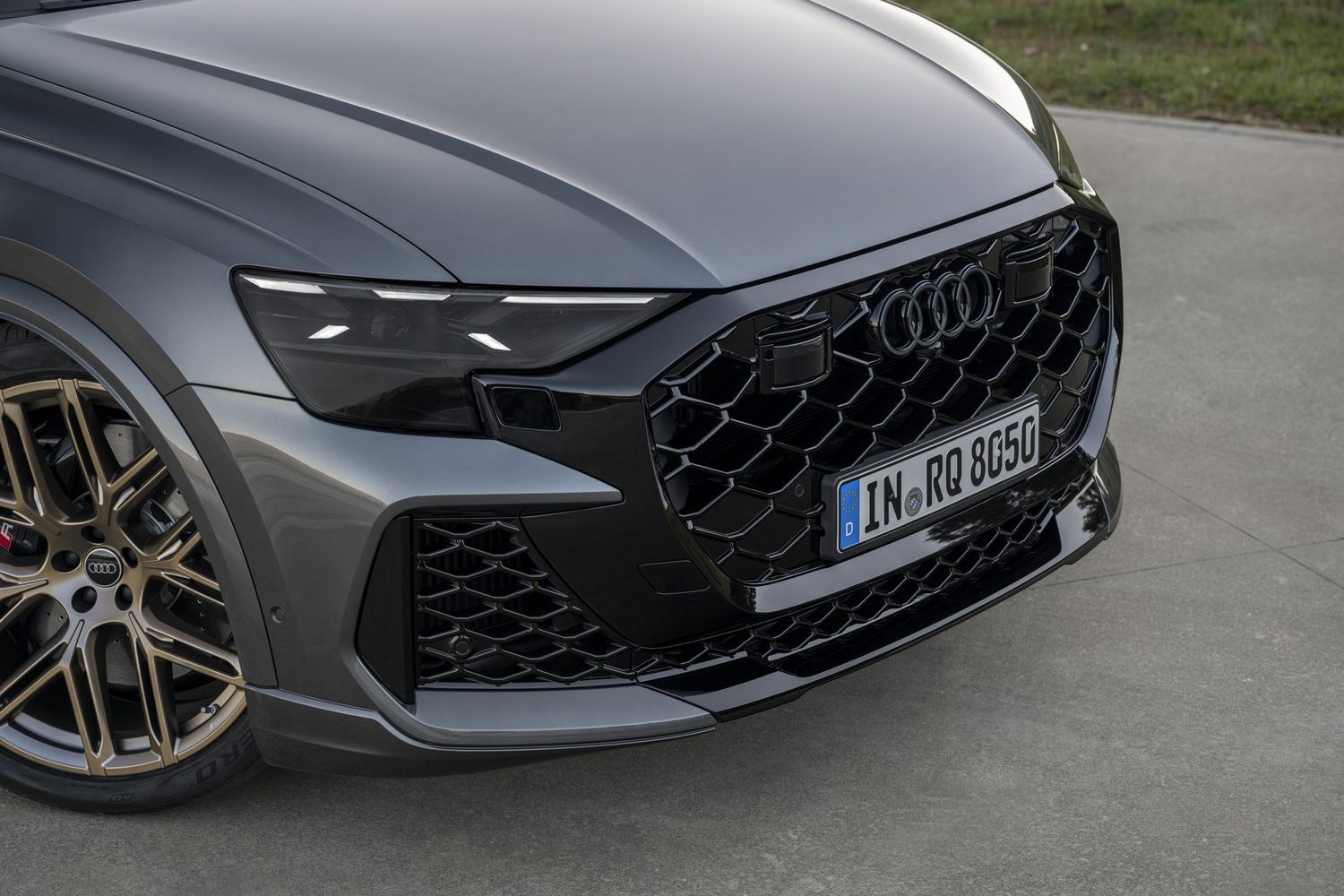
What does the new Audi RS Q8 look like?
Like everything else in the updated Q8 range, the new Audi RS Q8 doesn’t look all that different from its predecessor. Look closely and you might spot the lightly altered grille and the new lights, but you’ll be doing well to notice without a picture of the old car on hand for comparison.
In fairness, Audi didn’t need to do too much to the Q8’s design, because it’s already a modern-looking thing, albeit in a chunky kind of way. And because the RS is set apart by its sporty styling, it looks even more bulky and aggressive. Big bumpers and exhaust outlets are the order of the day, along with huge wheels and lots of black exterior trim. It won’t be to everyone’s taste, but we reckon it’s quite handsome, even if the SQ8 is smarter.
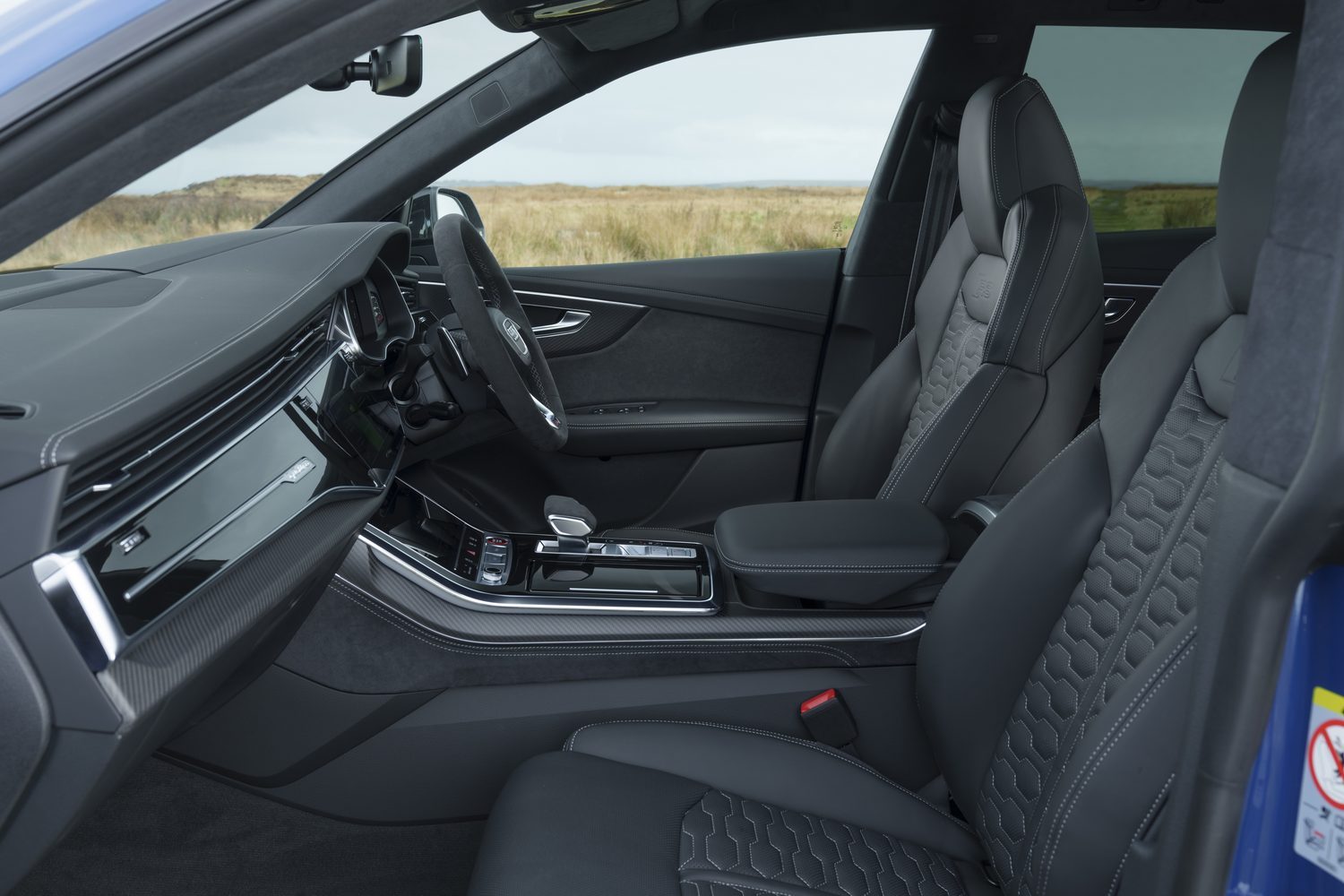
A look inside the Audi RS Q8
As with the exterior, little has changed inside the Q8, so the RS model’s cabin is hardly revolutionary. As before, there’s a bulky but modern dashboard design packed with screens. There’s a central infotainment system, a digital instrument display and a touchscreen climate control panel lower down, largely usurping physical switchgear.
Normally, that would make the car’s interior minimalist and clean, but there’s a little too much going on in the Q8’s cabin for it to qualify as Bauhaus. It isn’t messy, per se, but there are lots of materials on show and some interesting angles - not least in the gear selector, which is the size of a large pebble, but more angular. If it sounds unwieldy, though, it isn’t. It’s a surprising metaphor for the rest of the Q8, in that it’s more ergonomic than it looks.
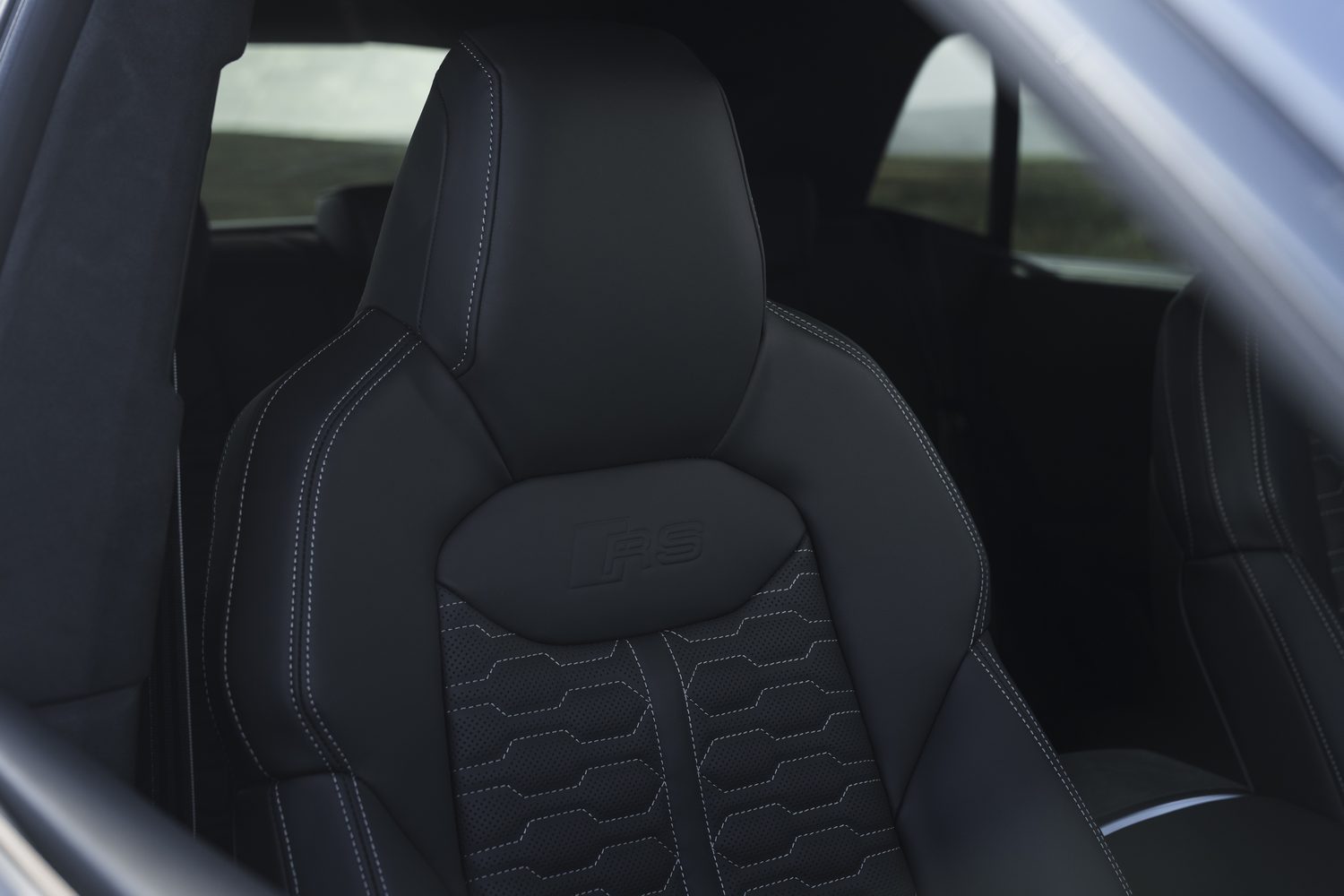
It’s also very well built, with every panel fitting perfectly alongside its neighbour and every material feeling premium. They’re mostly well-chosen, too, although there is quite a lot of glossy black plastic in there, which won’t suit everyone and might be a pain to keep clean. That said, it’s complemented by lovely leather, tactile plastic and some classy metal trim, all of which suits the car’s robust take on luxury.
But for all these compliments, there isn’t much that’s new. The design is largely unchanged, and though the RS Q8 gets smart sports seats, RS badging and a few other relatively subtle upgrades, it doesn’t feel much different from an SQ8 or even a diesel Q8.
Again, though, the lack of change is not all bad, because it means interior space remains as generous as ever. Even tall adults will have no problem sitting in the back seats, with ample head- and legroom, while boot space is ample, too. Maybe it isn’t the biggest boot in the class, but at more than 600 litres with all five seats upright, it’s hardly cramped in there. Certainly, you could take a family of four on a week-long holiday without too much trouble.
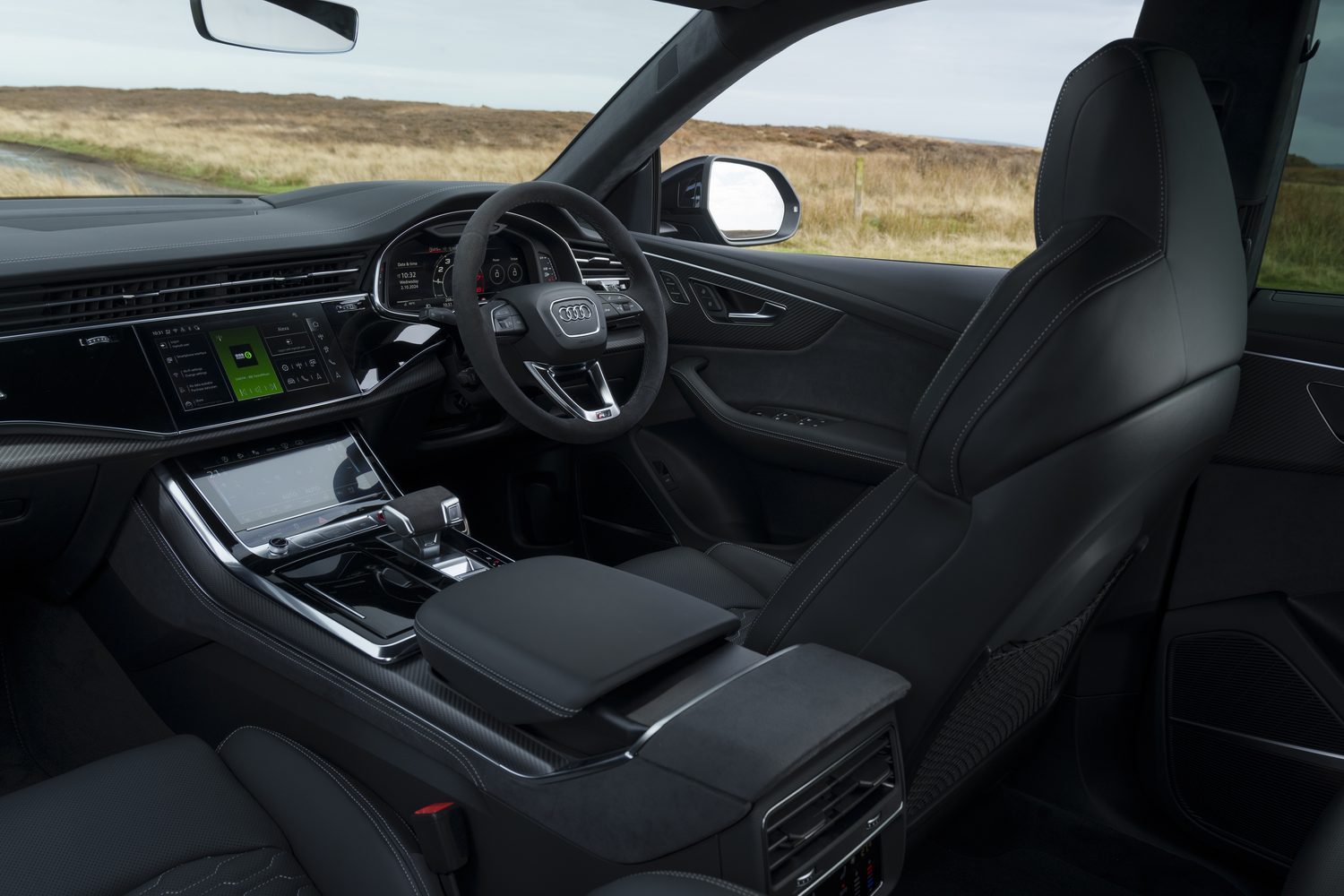
The Audi RS Q8’s on-board technology
With three screens and a head-up display in the Q8’s cabin, it’s clear that technology plays a starring role in the new model. Yet the technology itself isn’t especially new, which might come as a bit of a disappointment to some buyers.
It shouldn’t be seen that way, though, because the technology in the Q8 has always been first-rate, and it remains well-executed despite its advancing years. Take the ‘Virtual Cockpit’ digital instrumentation, for example, which is highly configurable and nicely laid out, giving you a cool, useful display that can be customised to show you exactly what you want to see.
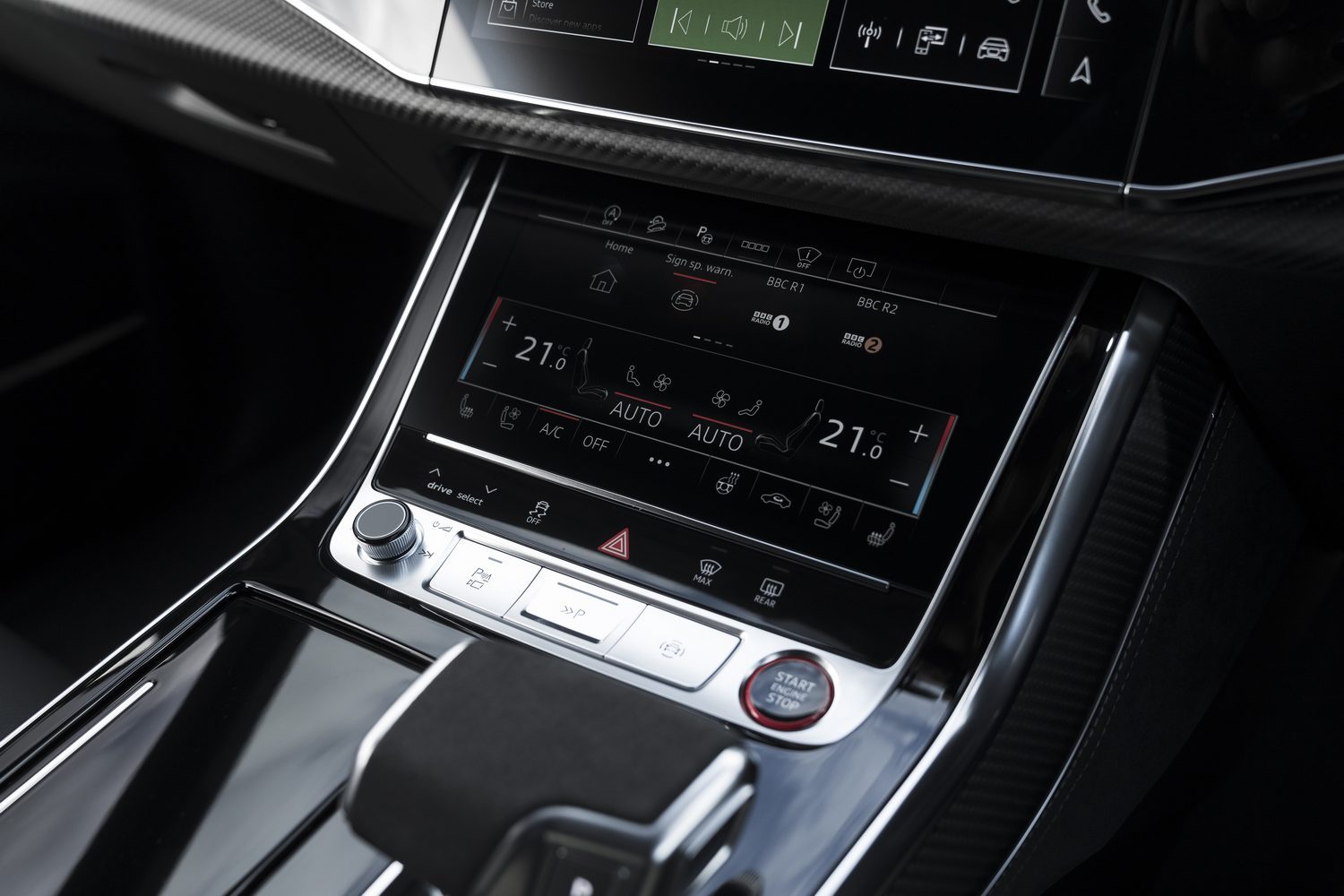
The central infotainment system, meanwhile, is equally logical in its layout, and the screen is sharp both in terms of resolution and response, which is good news for all concerned. And the head-up display, projected onto the windshield, is also sharp and well presented.
So far, so good, but the lower touchscreen is the Achilles heel in the RS Q8 experience. It looks fine, and the idea of presenting climate control and other functions - such as hill descent control - on one touchscreen panel is not a terrible one, but the screen itself behaves oddly. It has this weird feedback designed to make it feel like pressing a button, but it doesn’t quite work and means that you sometimes think you’ve pressed something when you haven’t.
That’s a minor complaint, though, and it doesn’t seriously detract from what is generally an harmonious tech experience. Everything works well and is integrated together seamlessly, so Audi’s decision not to change much for the new Q8 model has to go down as a solid one.
How fast is the Audi RS Q8?
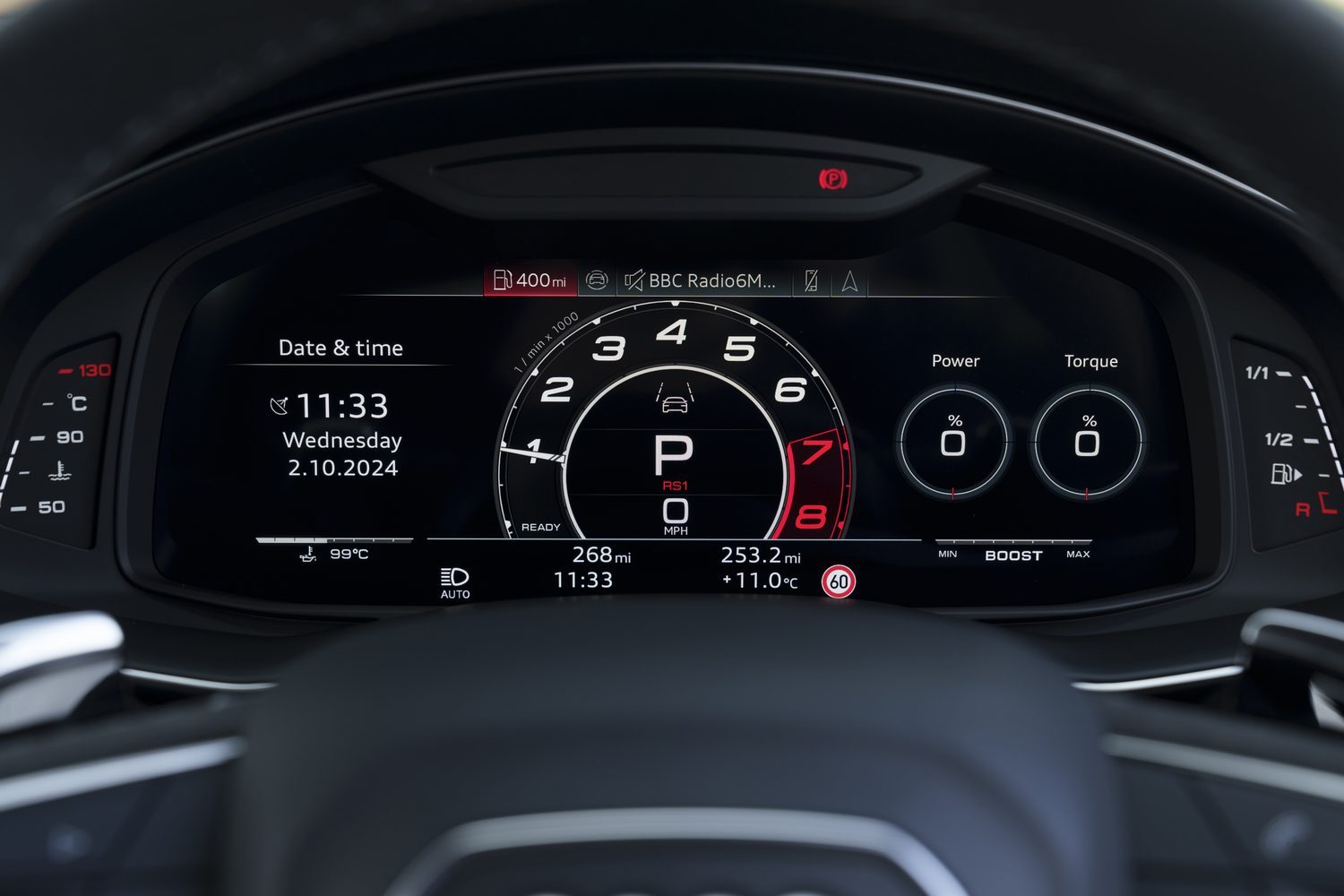
Under the bonnet of the RS Q8 is the 4.0-litre V8 petrol engine that has already impressed in the Audi SQ8. However, the already powerful V8 has been boosted from 507hp to a nice, round 600hp.
That’s a lot in anyone’s book, and it’s certainly enough to give this big, two-and-a-bit-tonne SUV the pace to mix it with sports cars. Put your foot down and the RS Q8 will roar from a standstill to 100km/h in well under four seconds, before it tops out at the obligatory 250km/h if you’re on a German autobahn.
In short, the RS Q8 is not just outrageously fast for something this size, but it’s outrageously fast full stop. The V8 makes a spectacular noise, too, and it provides an ample punch in the back, which makes it an incredible piece of kit for overtaking. But it’s quiet when you want it to be, making it relatively relaxing on the motorway, and it isn’t too obnoxious around town. Only when you squeeze the accelerator will it snarl menacingly.
Unsurprisingly, given the power and the noise, it’s hardly going to win any brownie points with Greenpeace. The big engine guzzles petrol with glee, and the carbon dioxide pouring from the exhausts means it won’t usurp the plug-in hybrid versions as the company car driver’s transport of choice.
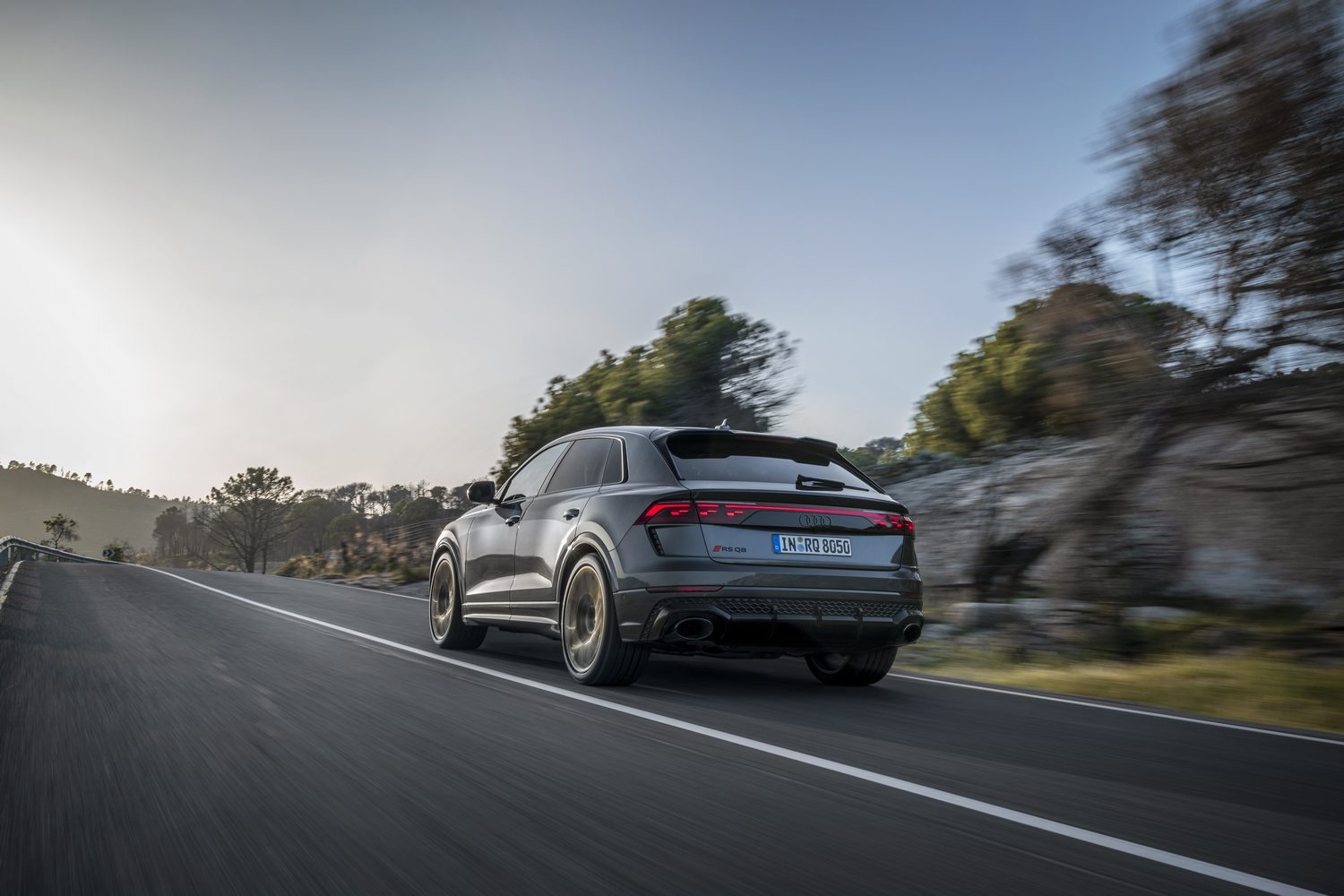
Driving the Audi RS Q8
There’s a theme of consistency in the new RS Q8, and that’s true of the driving experience, too. Audi hasn’t changed much compared with the old RS Q8, so the new model is still a very capable SUV with a huge amount of bandwidth that allows it to adapt to pretty much any situation you care to mention.
Leave it in its most laid-back settings, and it’s a comfortable cruiser well suited to long motorway drives, even if it doesn’t quite have the compliance of a diesel Q8’s suspension. At high speeds, though, it’s still smooth and surprisingly quiet, which makes it relaxing and upmarket.
Around town, meanwhile, the big wheels, stiffer ride and ample weight have an impact on comfort, but not a disastrous one. It rides potholes and speed bumps firmly, but it doesn’t quite feel jagged or sharp enough to cause discomfort.
But if you want comfort, you probably won’t choose the RS Q8, so this car lives and dies by the way it handles. Fortunately, it does a great job on that front, with the reduction in comfort equating to an improvement in body control, making the car more stable and confidence-inspiring in the bends.
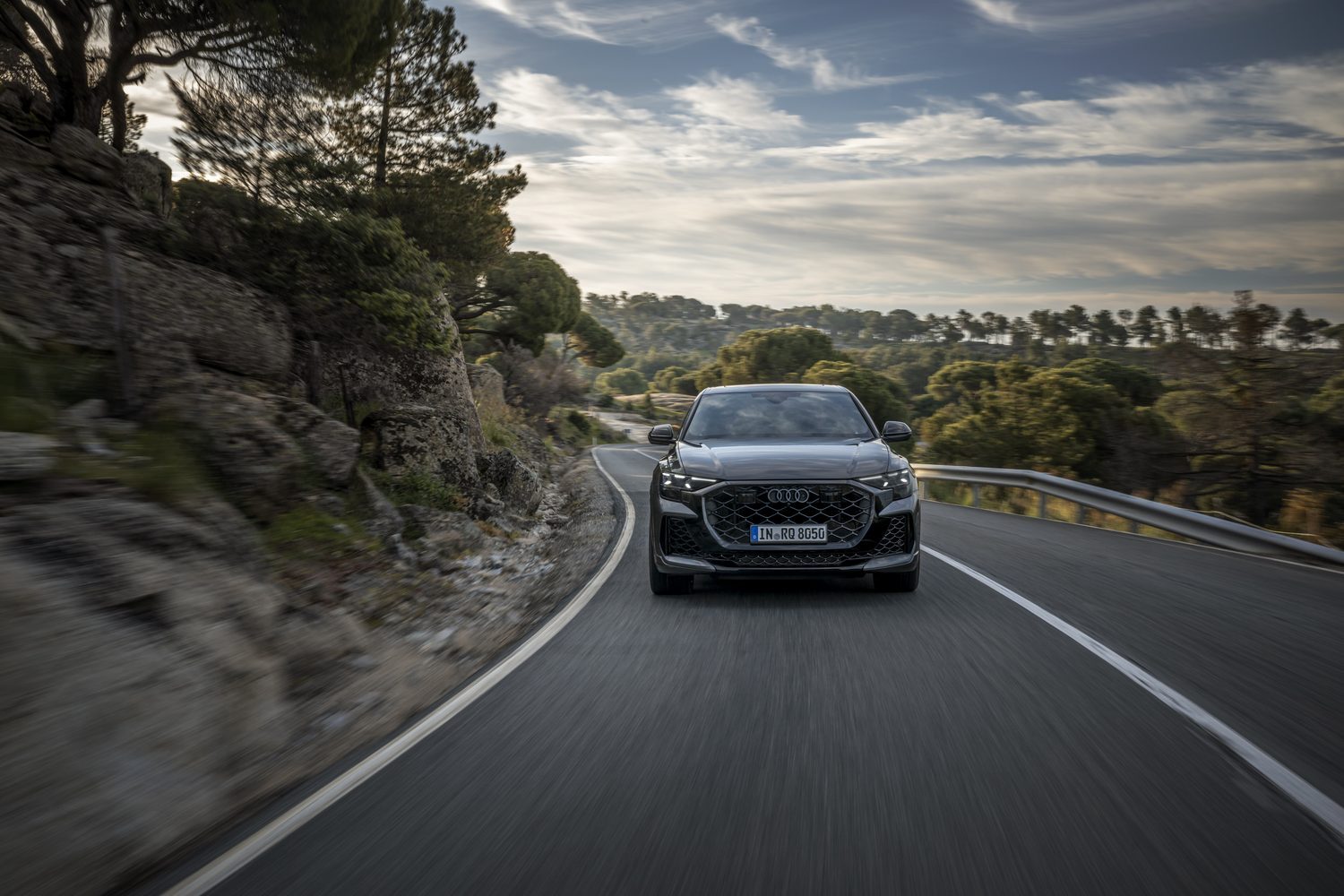
The steering is a little numb, particularly in the more comfortable settings, but if you choose the sportier modes the car feels mighty in terms of responsiveness and balance. It never hides its weight completely, but it deals with it very well indeed, and though it isn’t quite as poised as a Porsche Cayenne, it’ll give its compatriot a run for its money.
And it’s good at slowing down, as well as cornering. Step on the brake pedal and you’re granted enormous stopping power to counter the weight of the body and the grunt afforded by that V8. But it offers feel, too, allowing you to modulate the pedal smoothly and confidently.
Naturally, the RS Q8’s behaviour is impacted somewhat by the driving modes - the ride becomes noticeably jigglier in the sportier settings, for example - but Audi offers the driver plenty of customisation options, including RS presets accessed via the steering wheel. That way, you can save preferred settings and access them instantly, allowing you to set up the car the way you want it for a given situation.
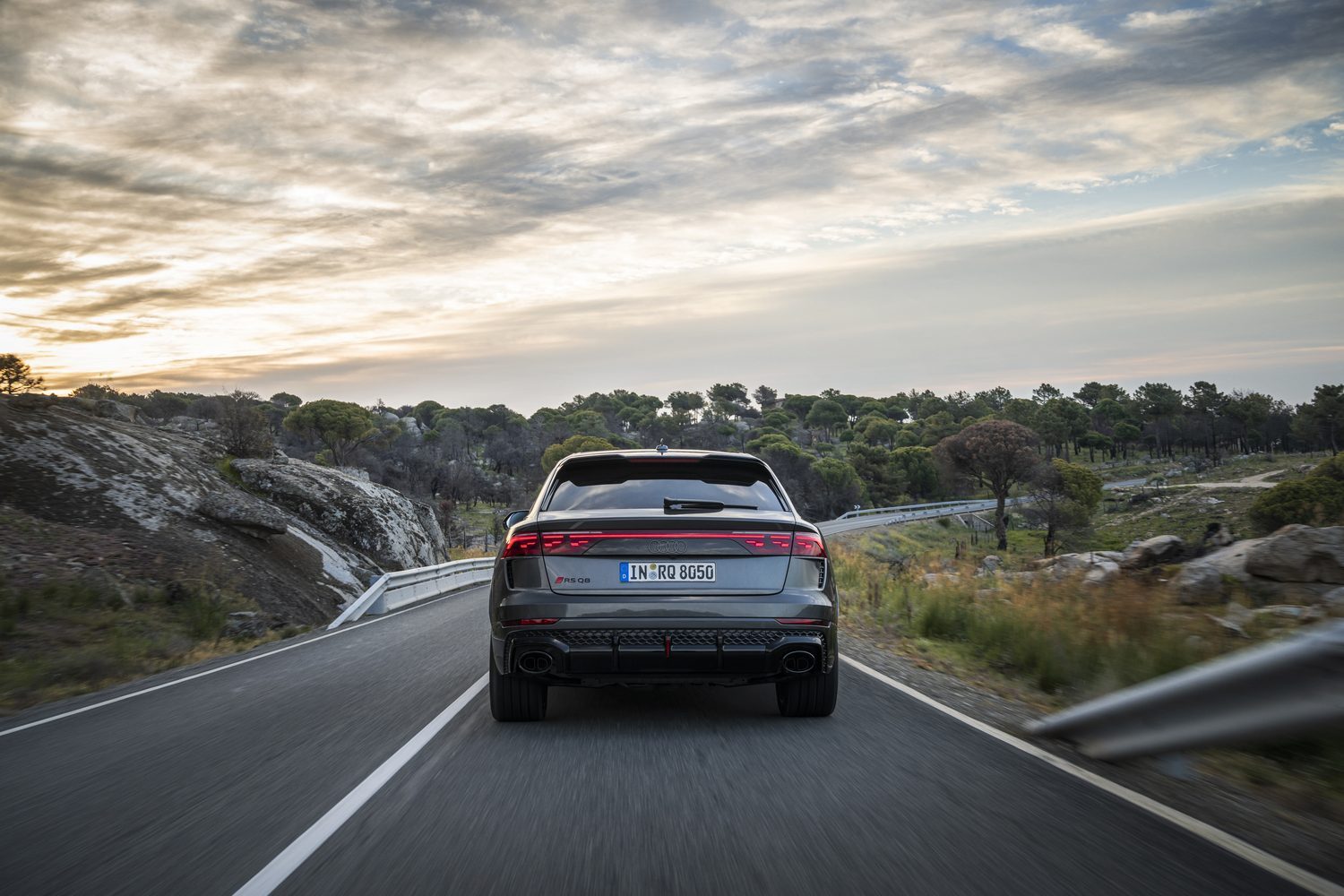
How much does the Audi RS Q8 cost in Ireland?
The Audi Q8 range starts at just over €100,000 for a plug-in hybrid model, but the RS Q8 costs significantly more. At €223,140, it’s an eye-watering €50,000 more expensive than the SQ8, and it’s almost €20,000 more expensive than the Porsche Cayenne GTS.
In exchange for that massive amount of money, the RS Q8 provides the increased power, as well as leather-trimmed sports seats, massive wheels, RS badging and the RS styling upgrades. There’s black trim all over the show, too, and you get all the usual Q8 goodies, including the two-screen infotainment system and Audi’s digital instrument display. Obviously, climate control, a reversing camera and navigation are part of the deal, too.
The reasons you’d buy an Audi RS Q8
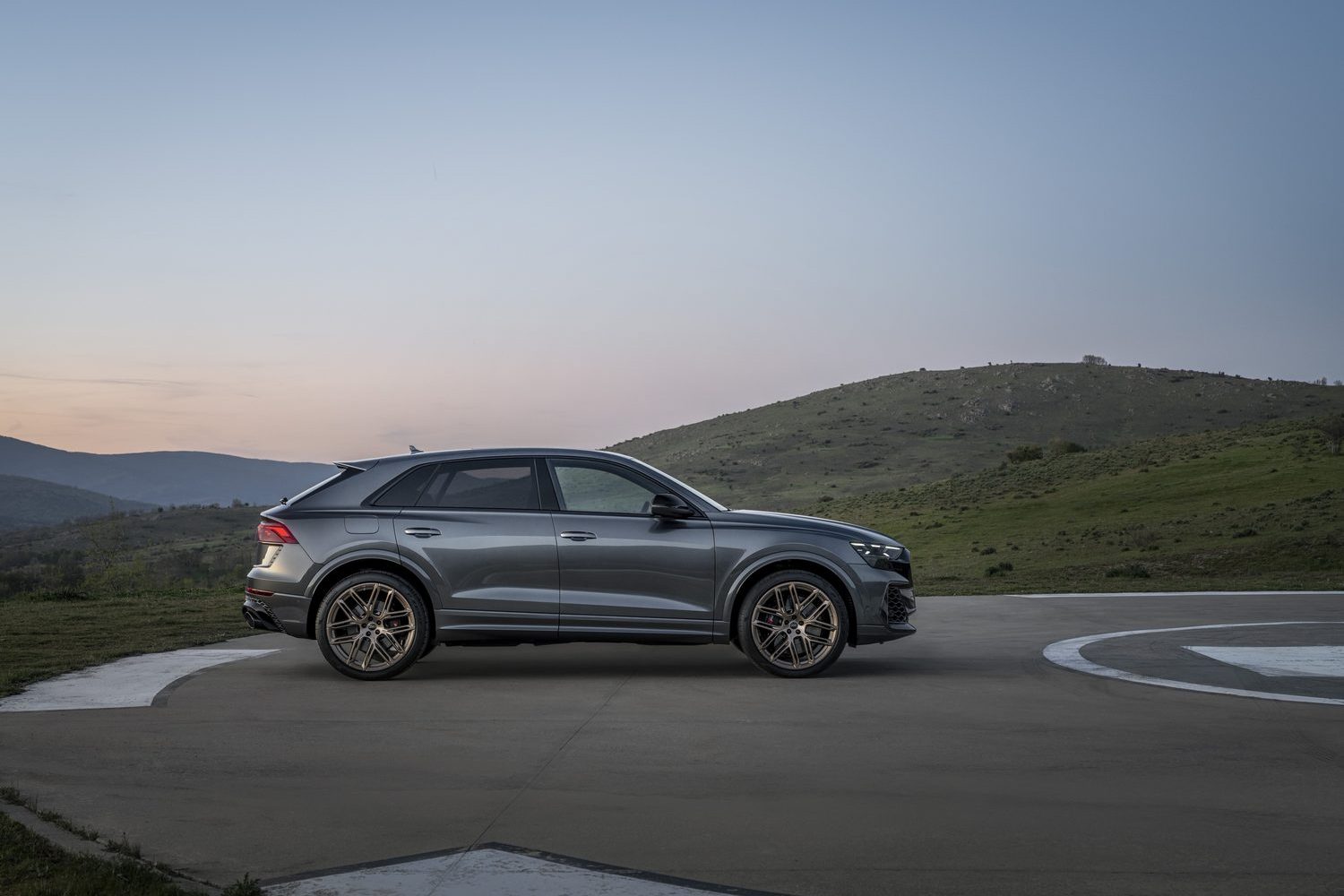
In many ways, the RS Q8 is deeply impressive. Merging handling, space, comfort and quality in this way is difficult, but the Audi manages it beautifully, and it does so with a glorious V8 rumble. But when the SQ8 is already brilliant, and the RS Q8 has such a talented cohort of rivals against which it must compete, the reasons for buying one begin to fade. A Cayenne GTS handles that bit better, a Range Rover Sport SV is a fraction more comfortable, and an Aston Martin DBX is easier on the eye. Don’t get us wrong - the RS Q8 is still a great car - but it just doesn’t stand out in such illustrious company.
Ask us anything about the Audi RS Q8
If you’d like to know more about the new Audi RS Q8, or any other model in Audi’s range, then head on over to our Ask Us Anything page. There, you can post your question - whether it’s Audi-related or otherwise - and our team of experts will get to work on an answer, giving you the information you need to make your next car-buying decision. Best of all, it’s completely free of charge.

